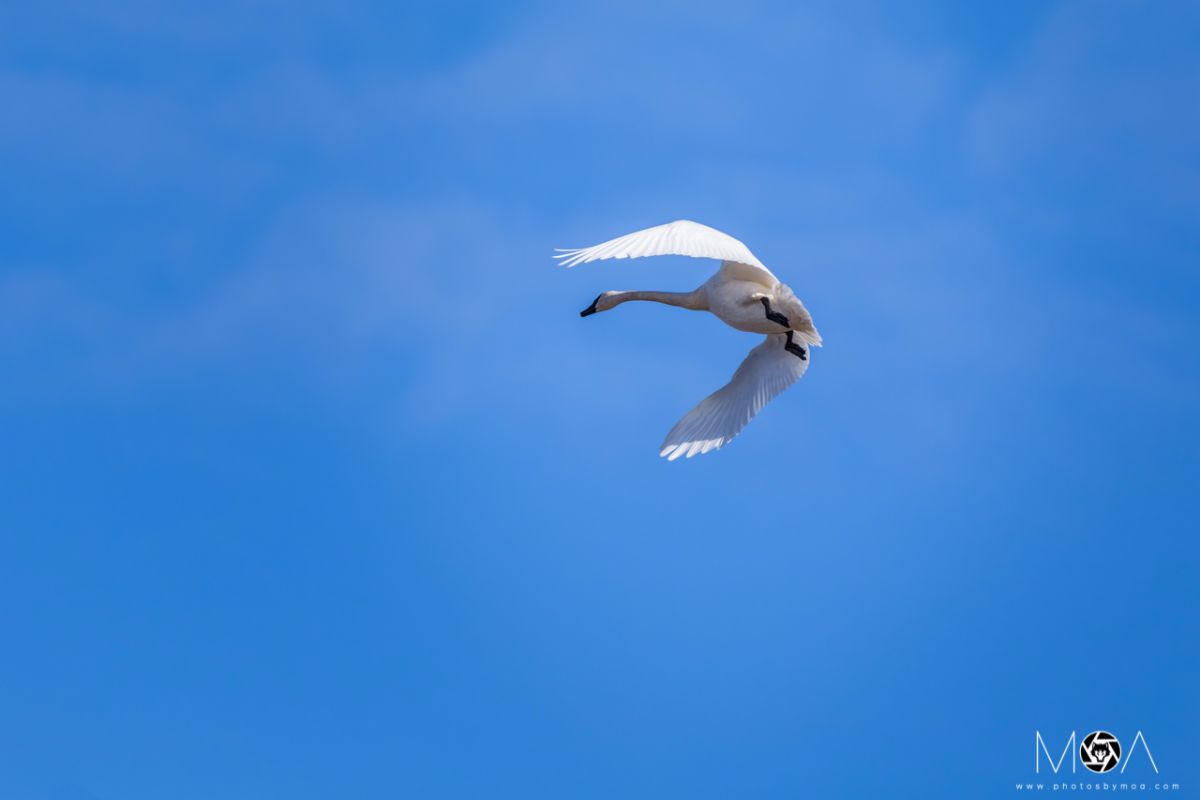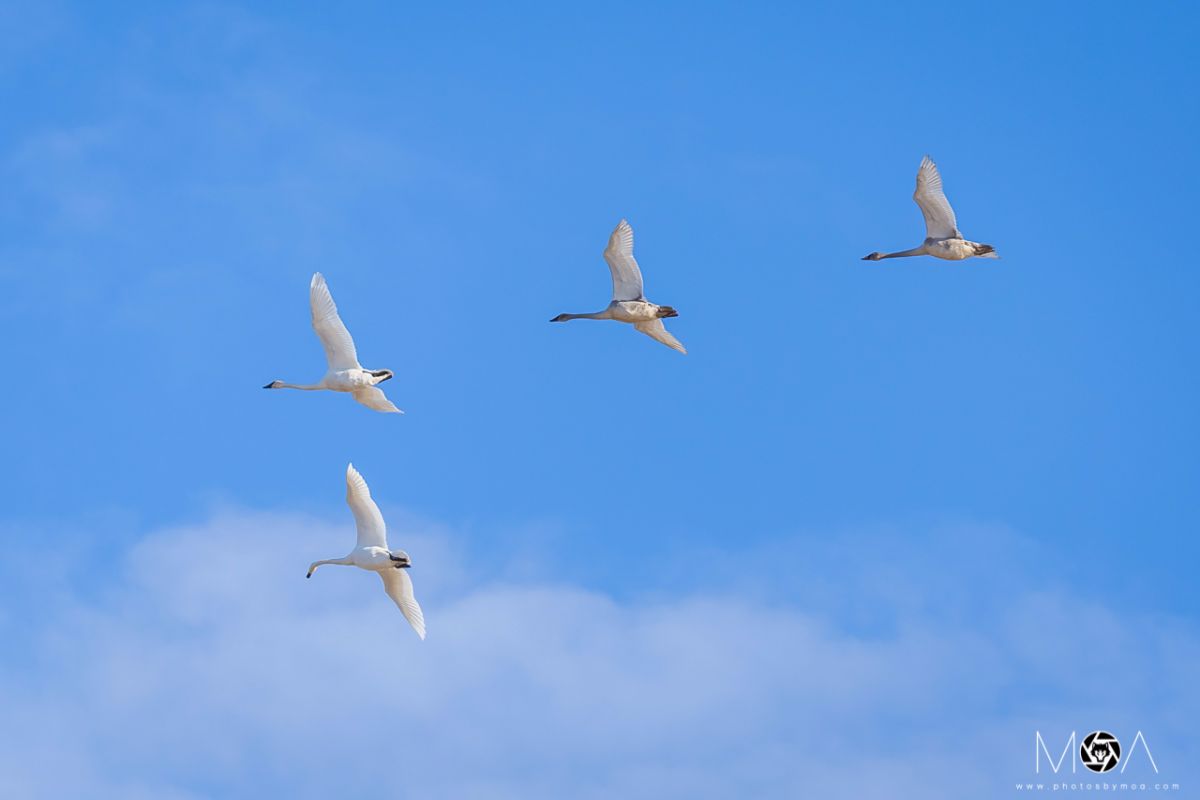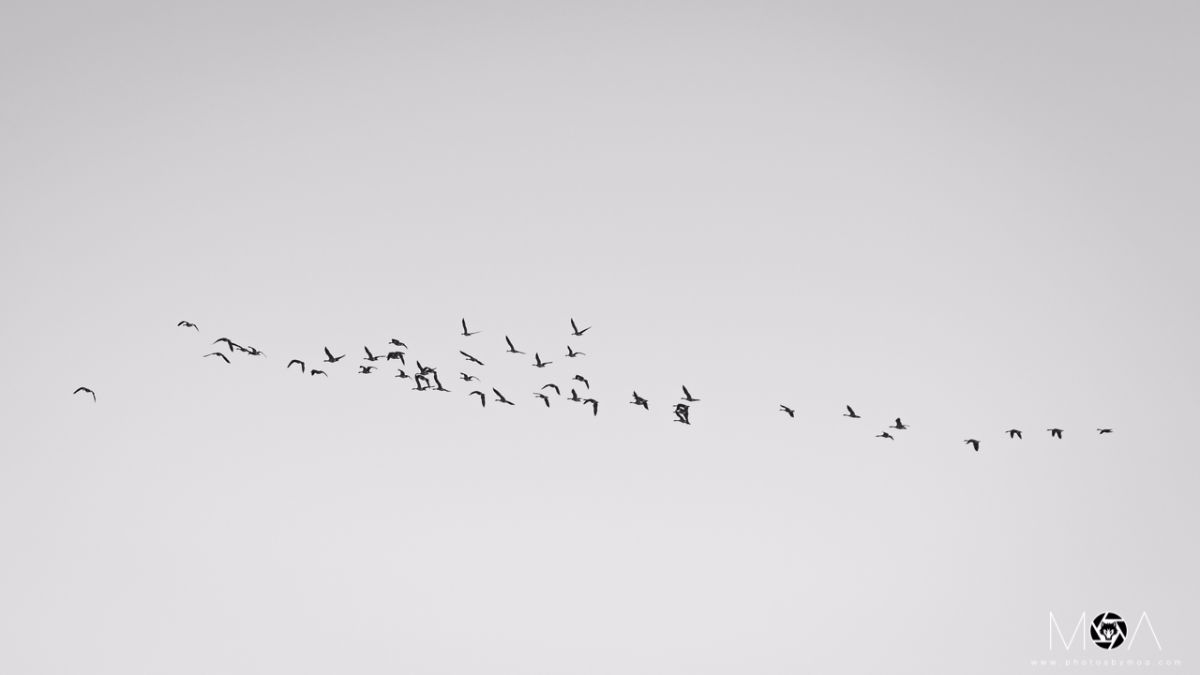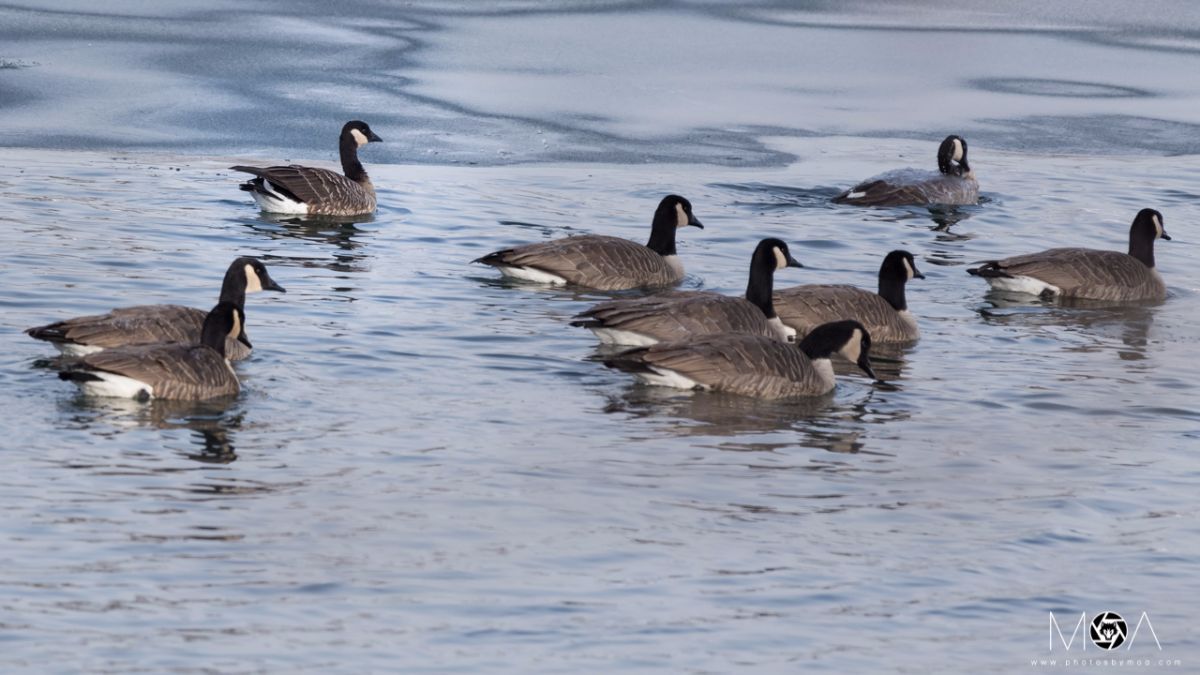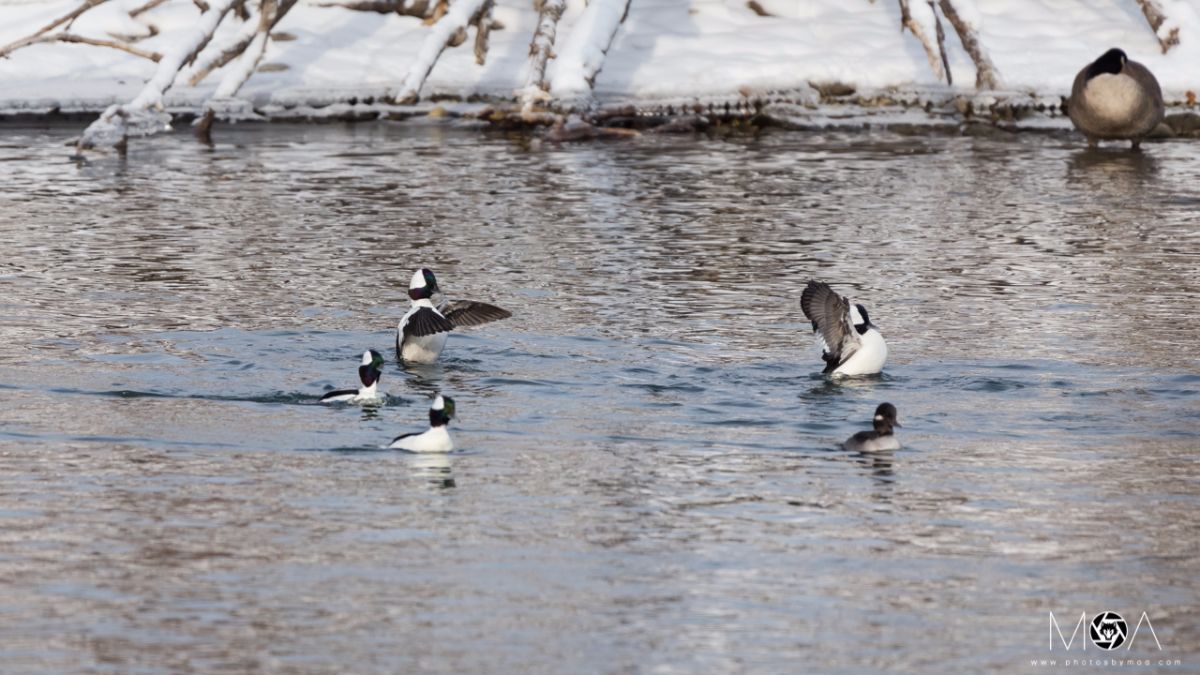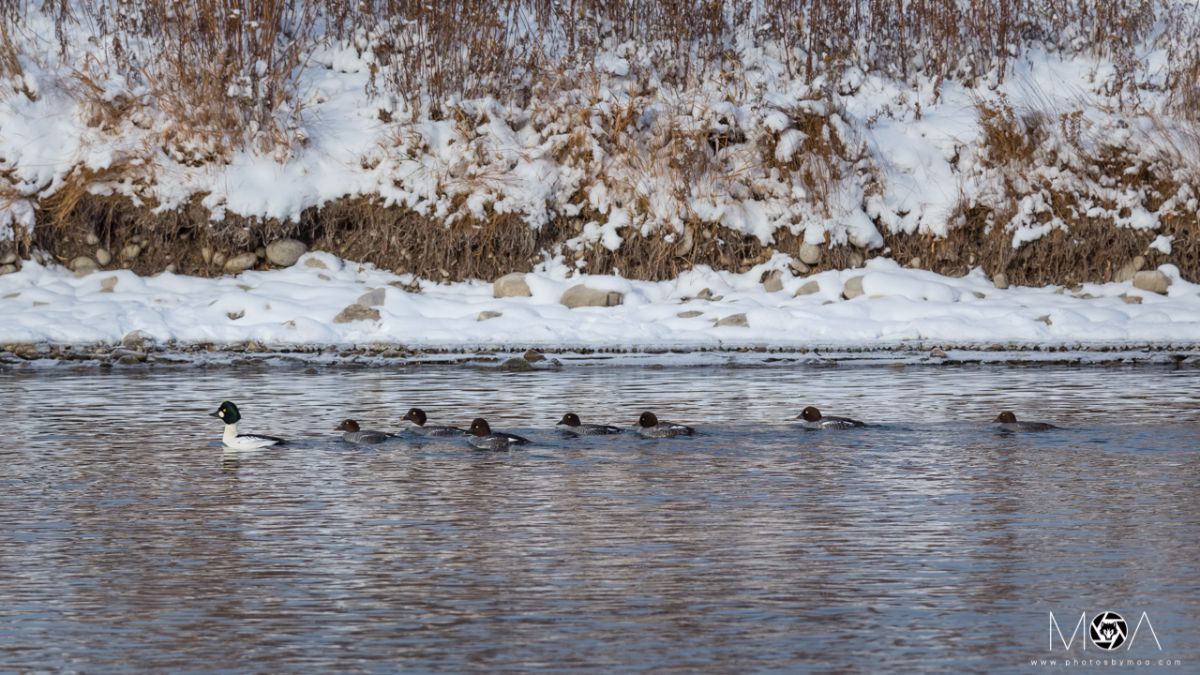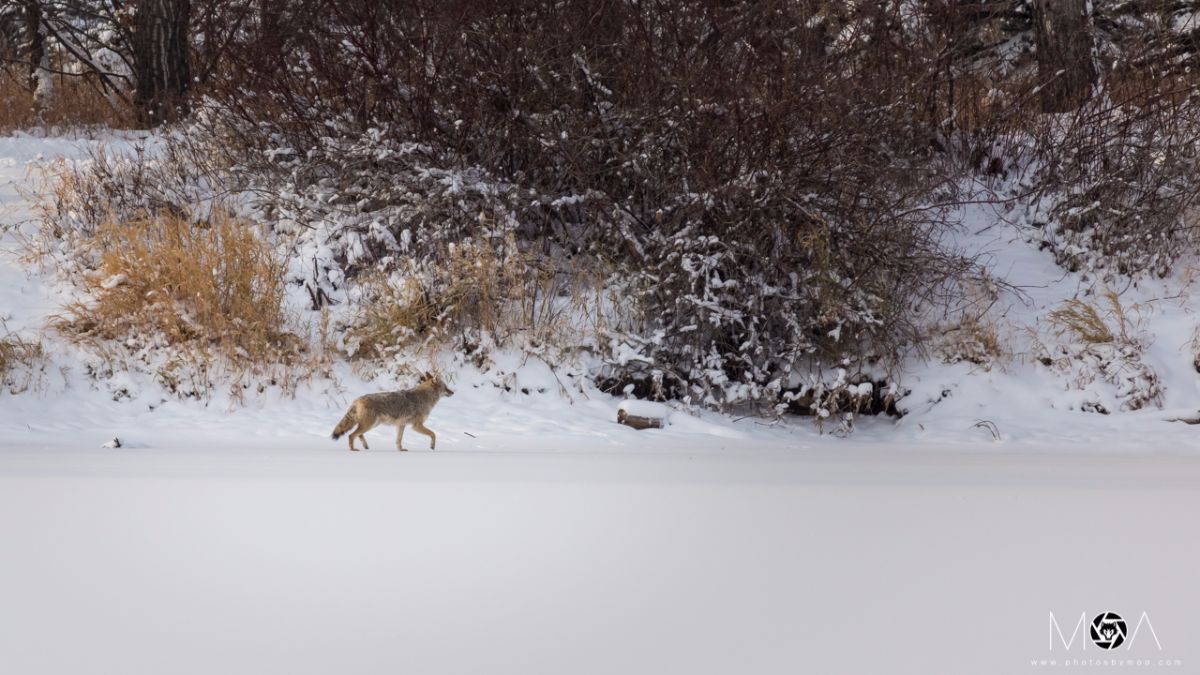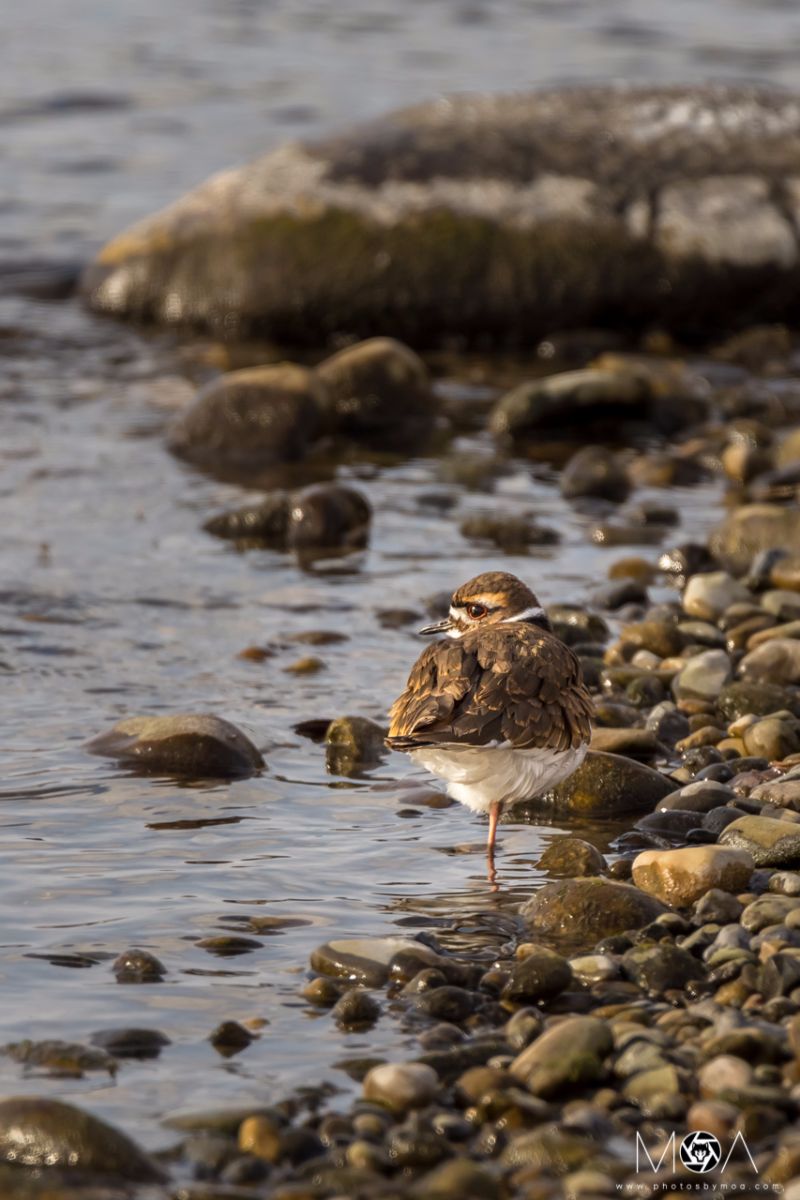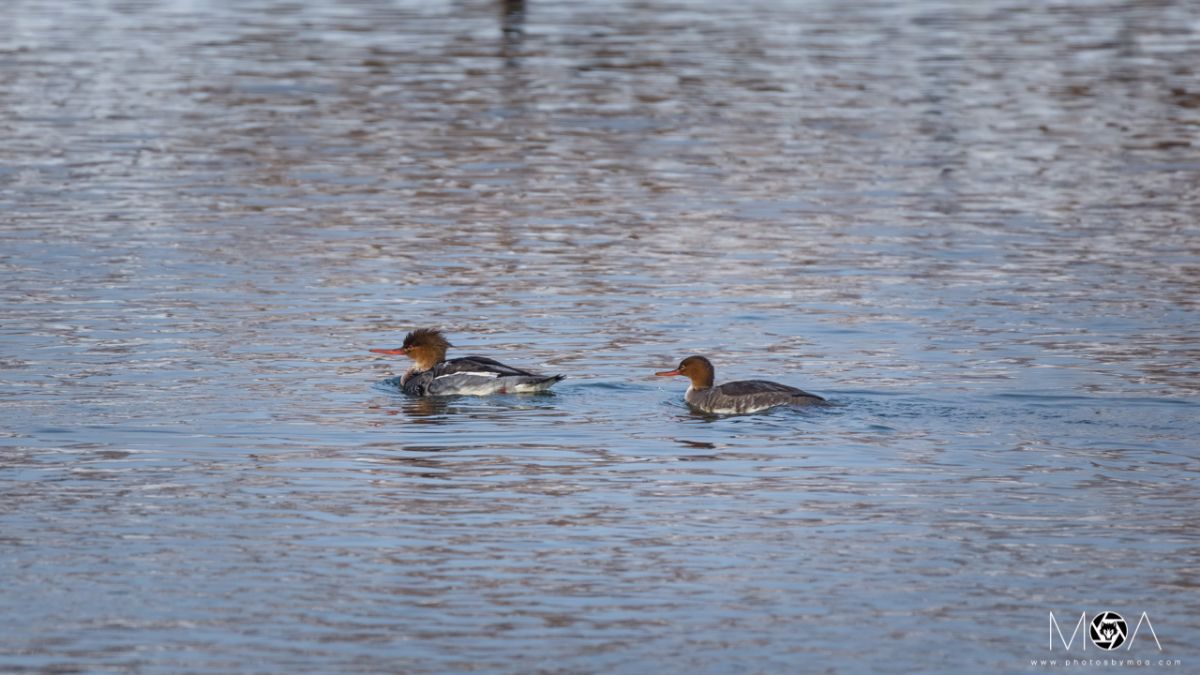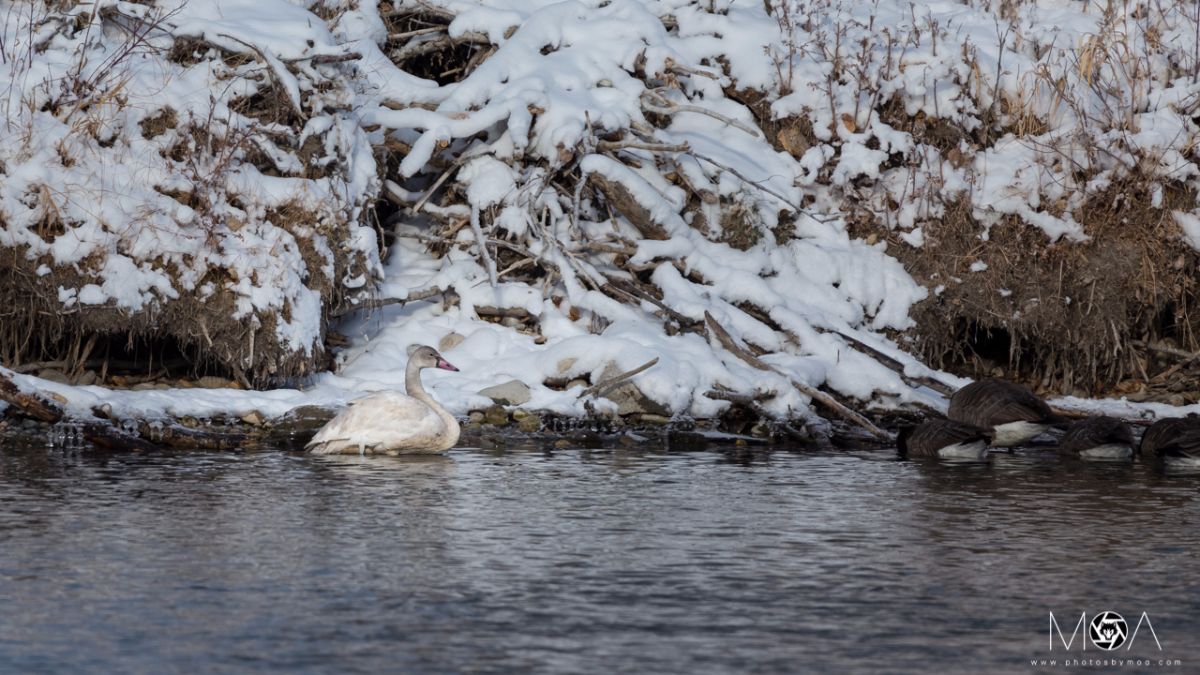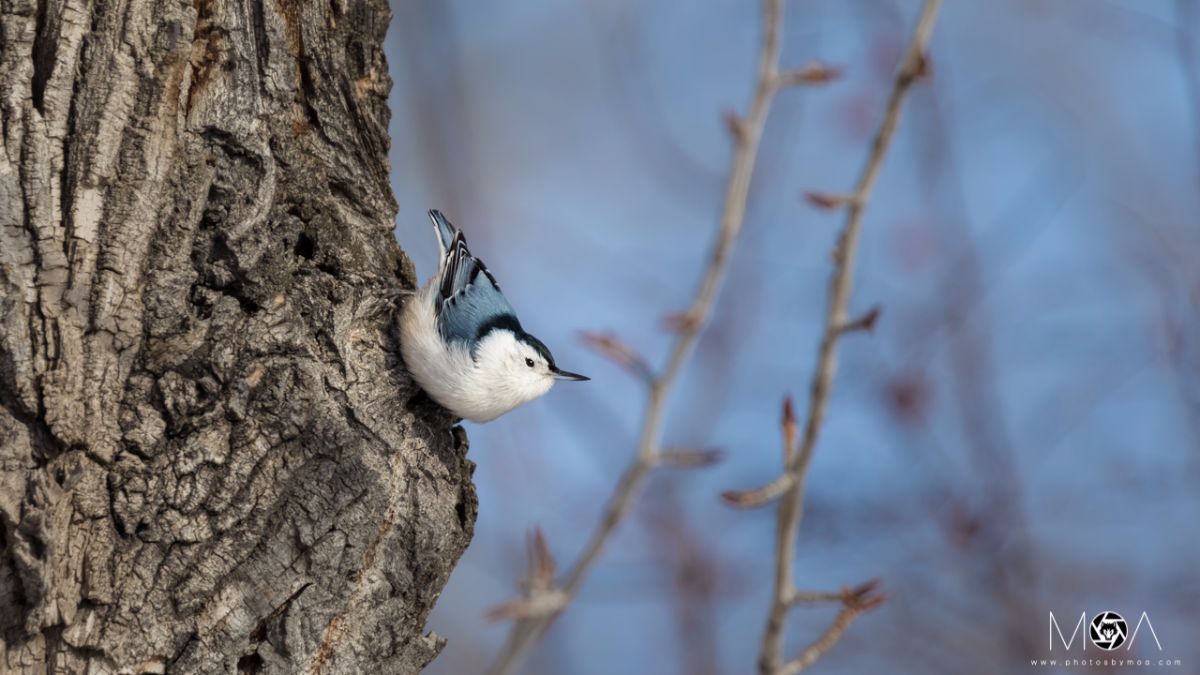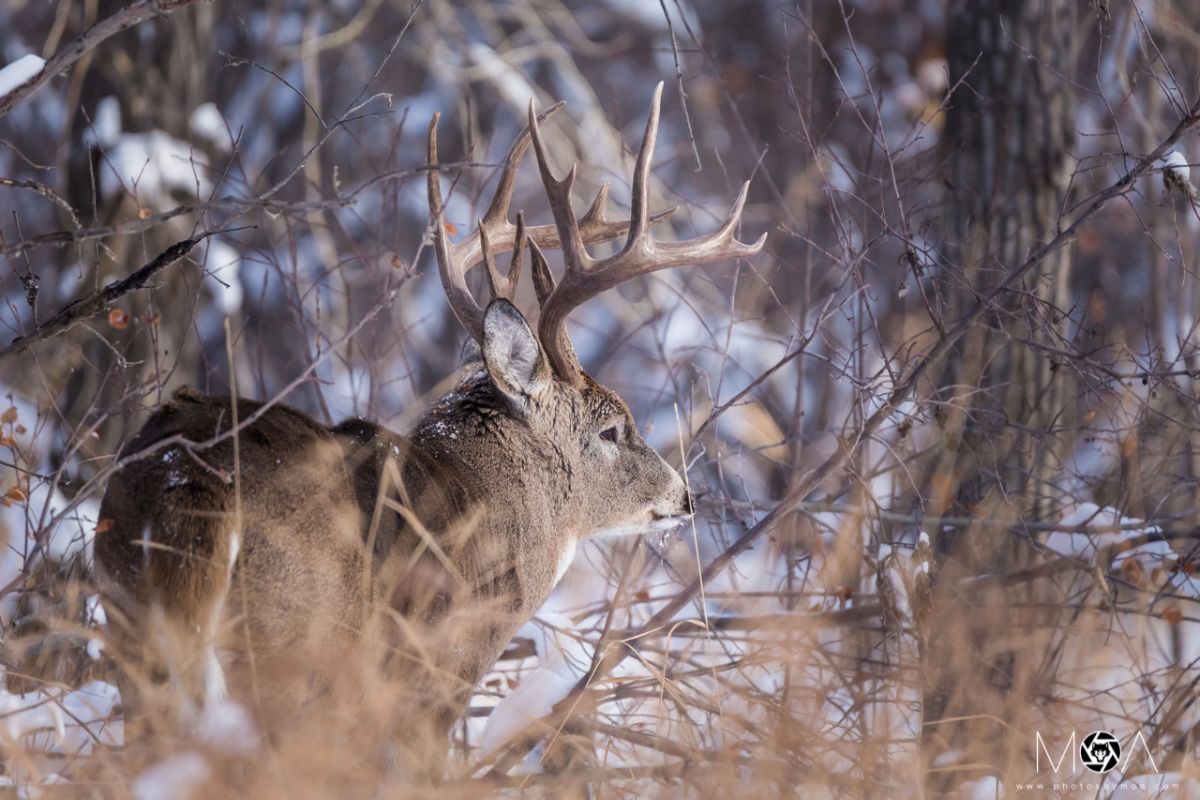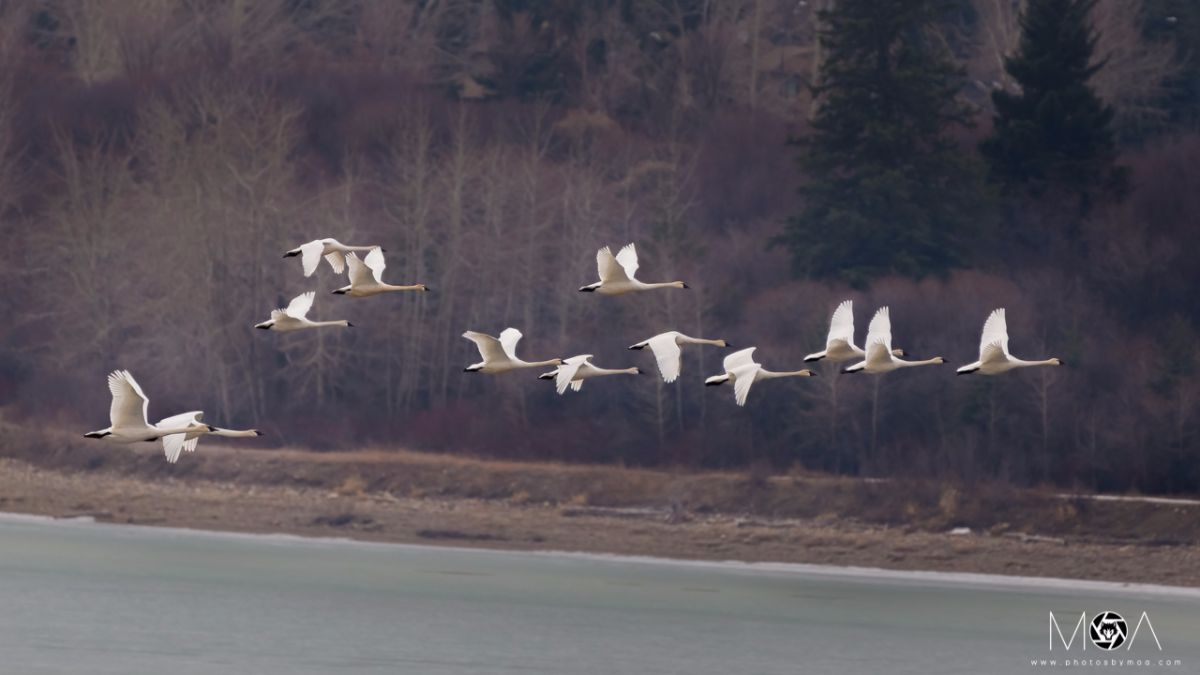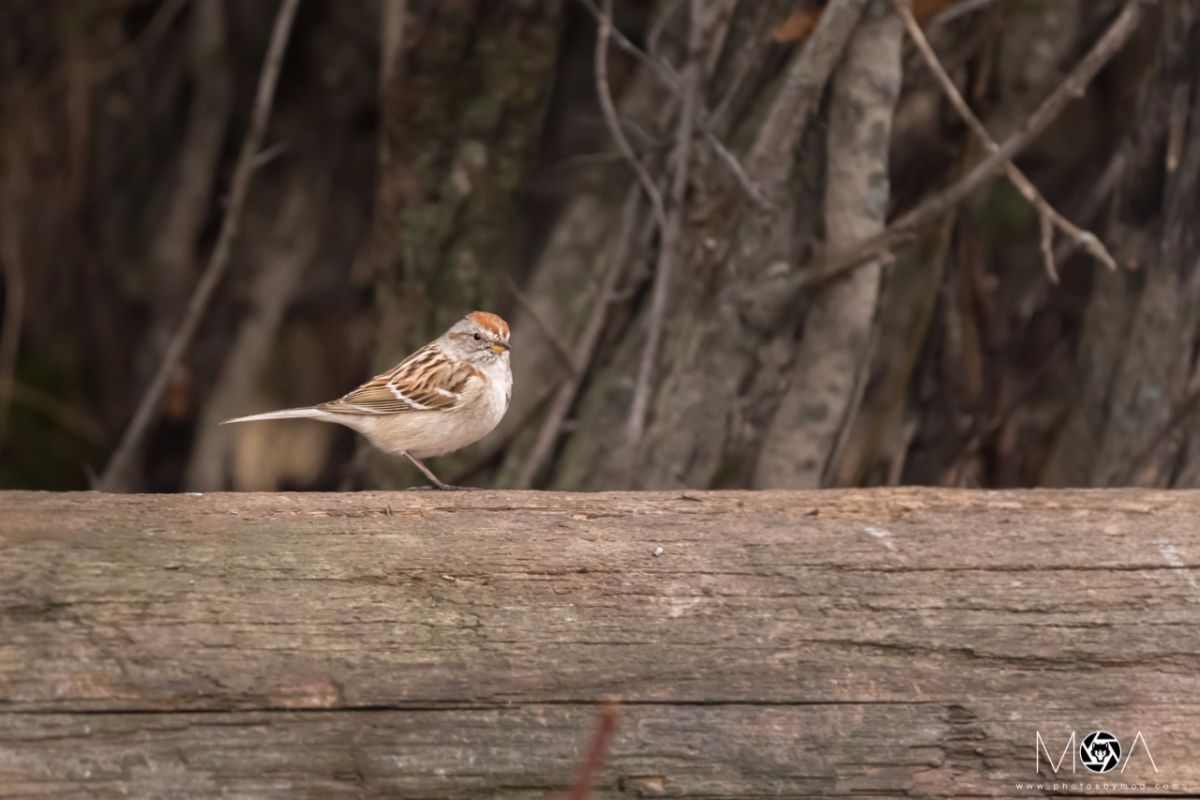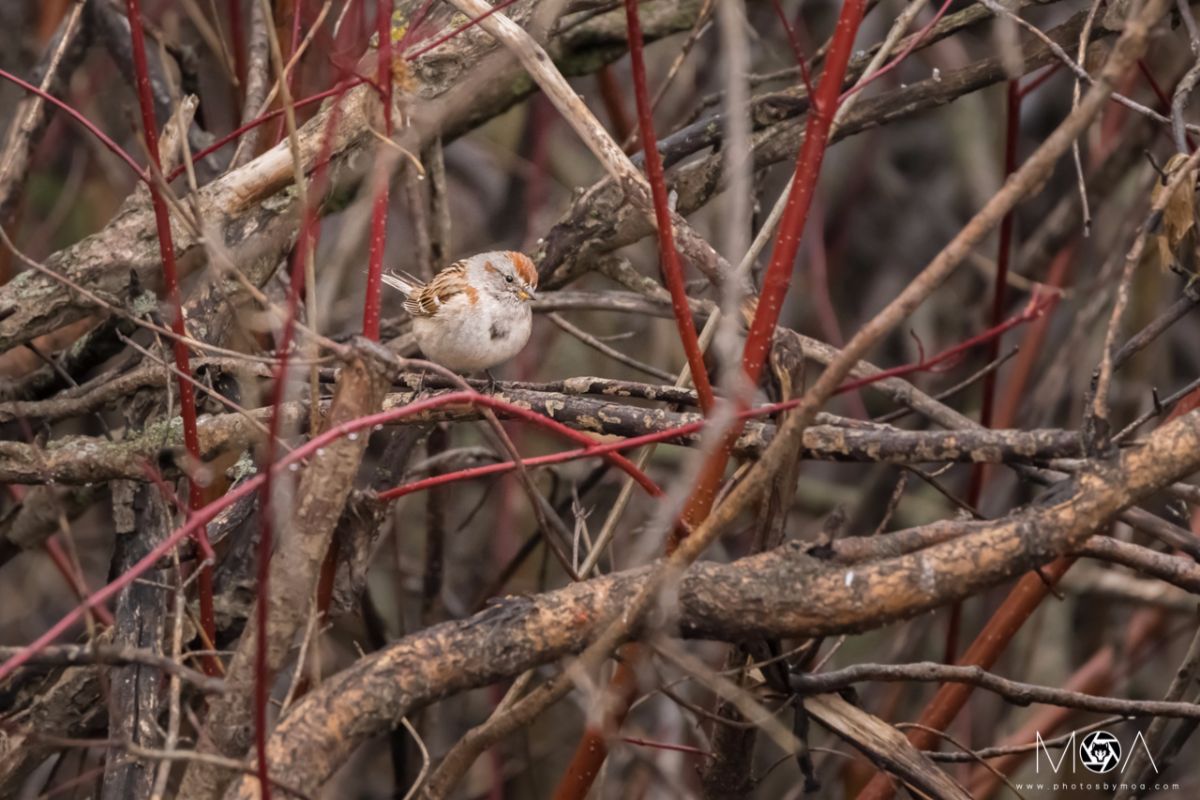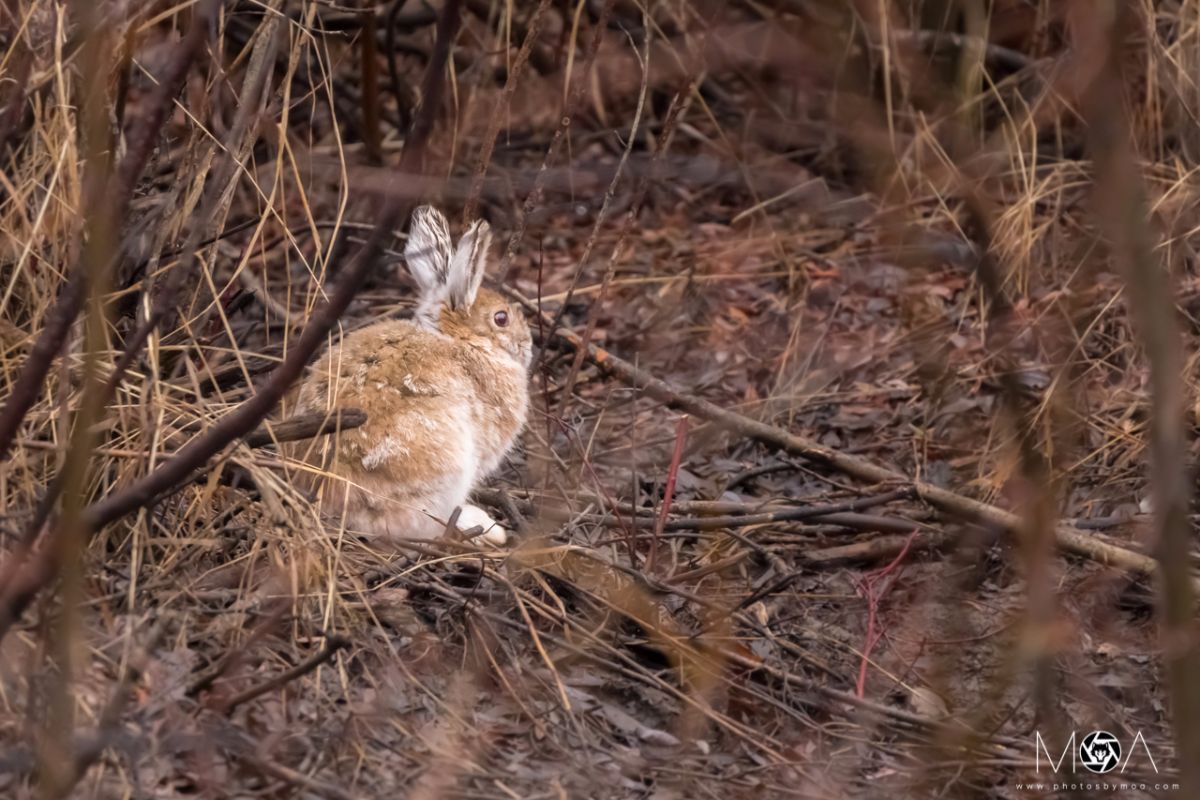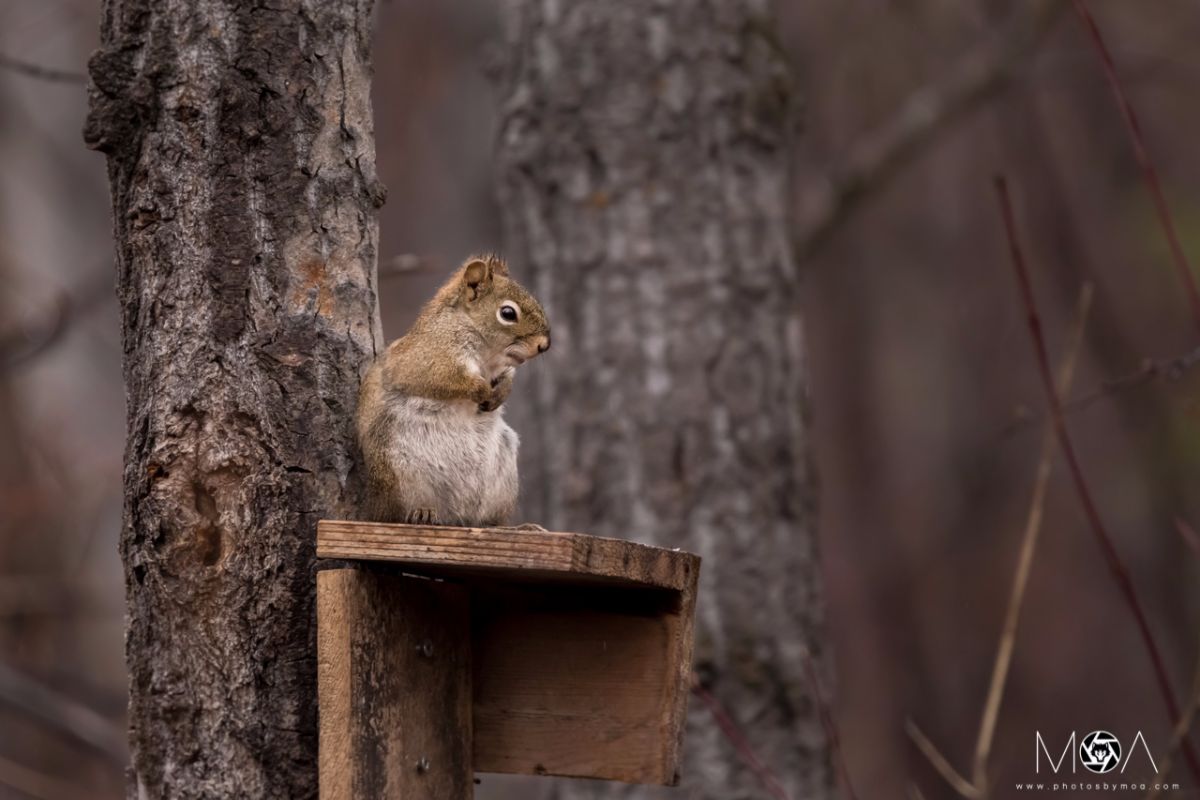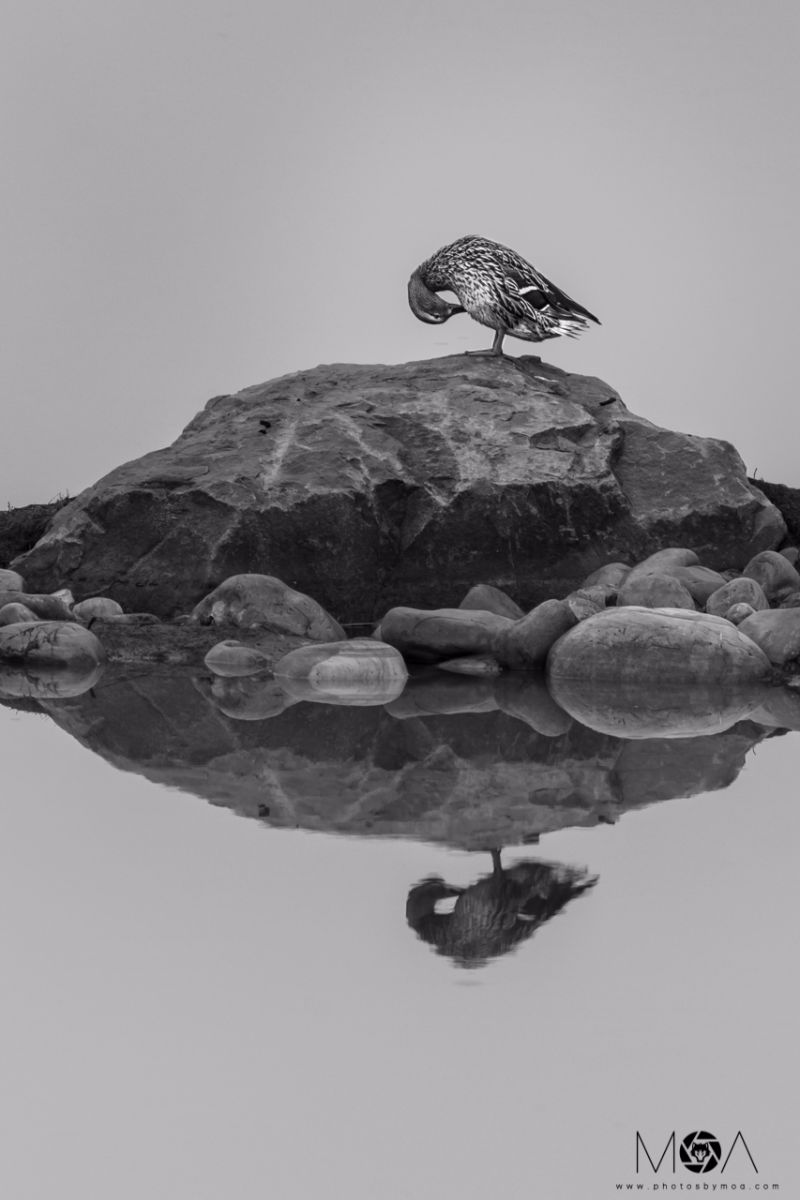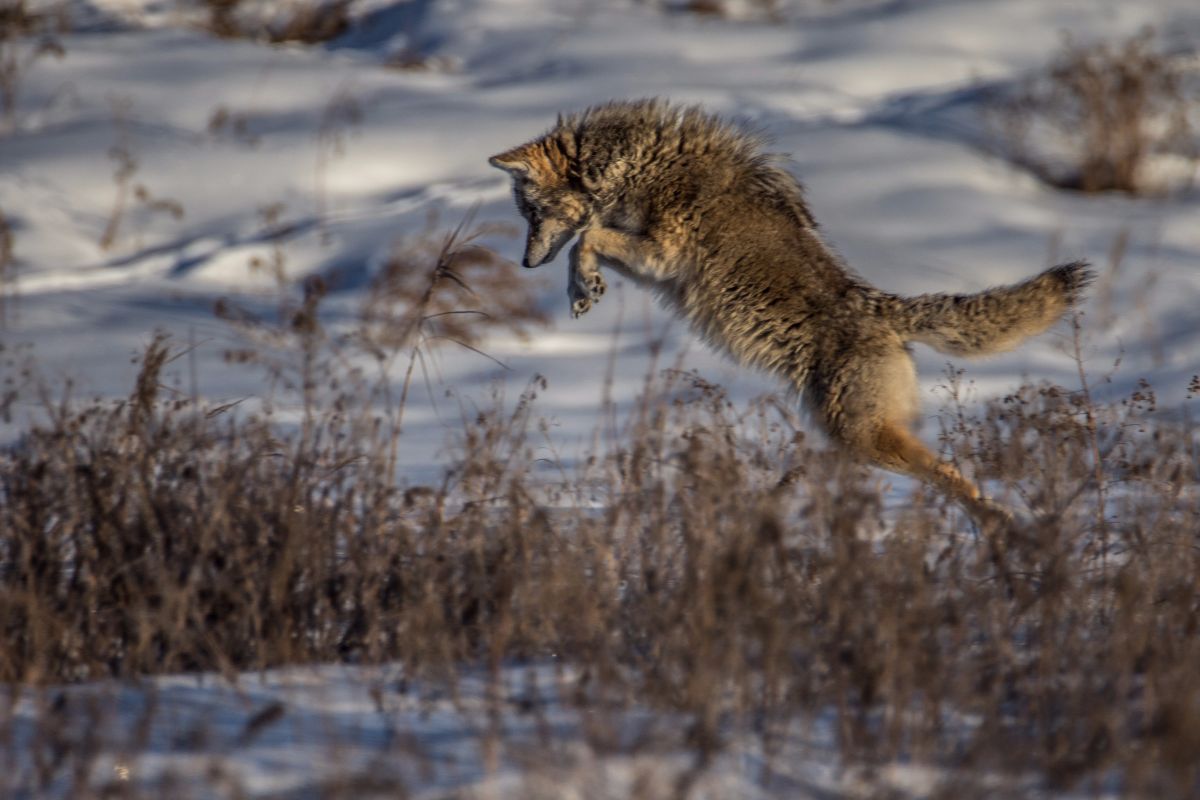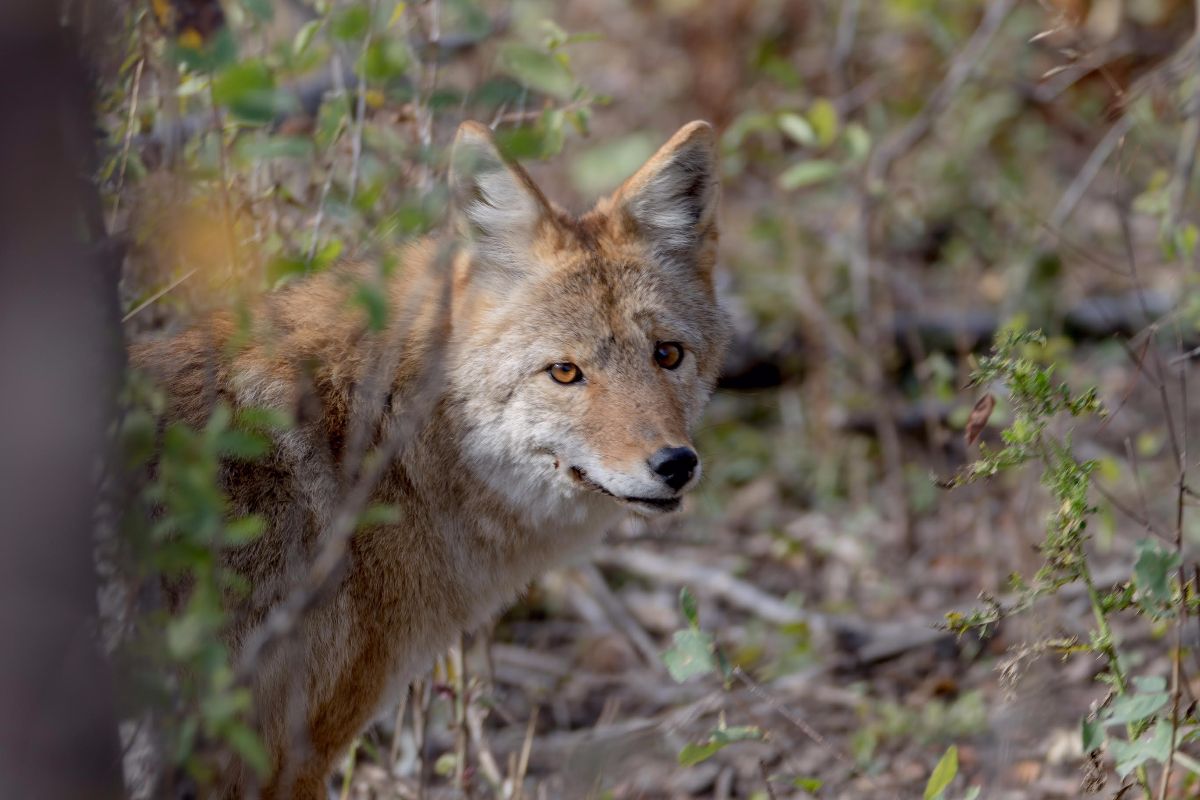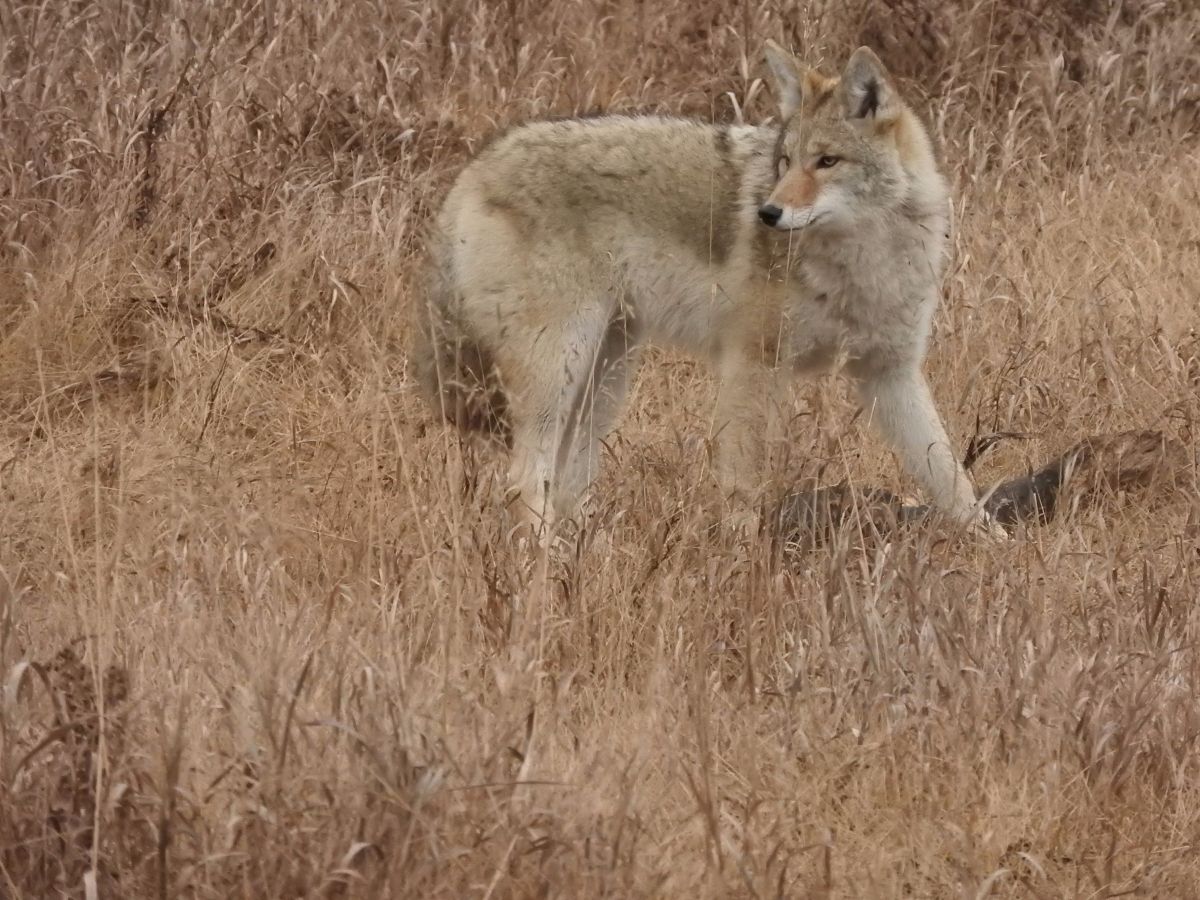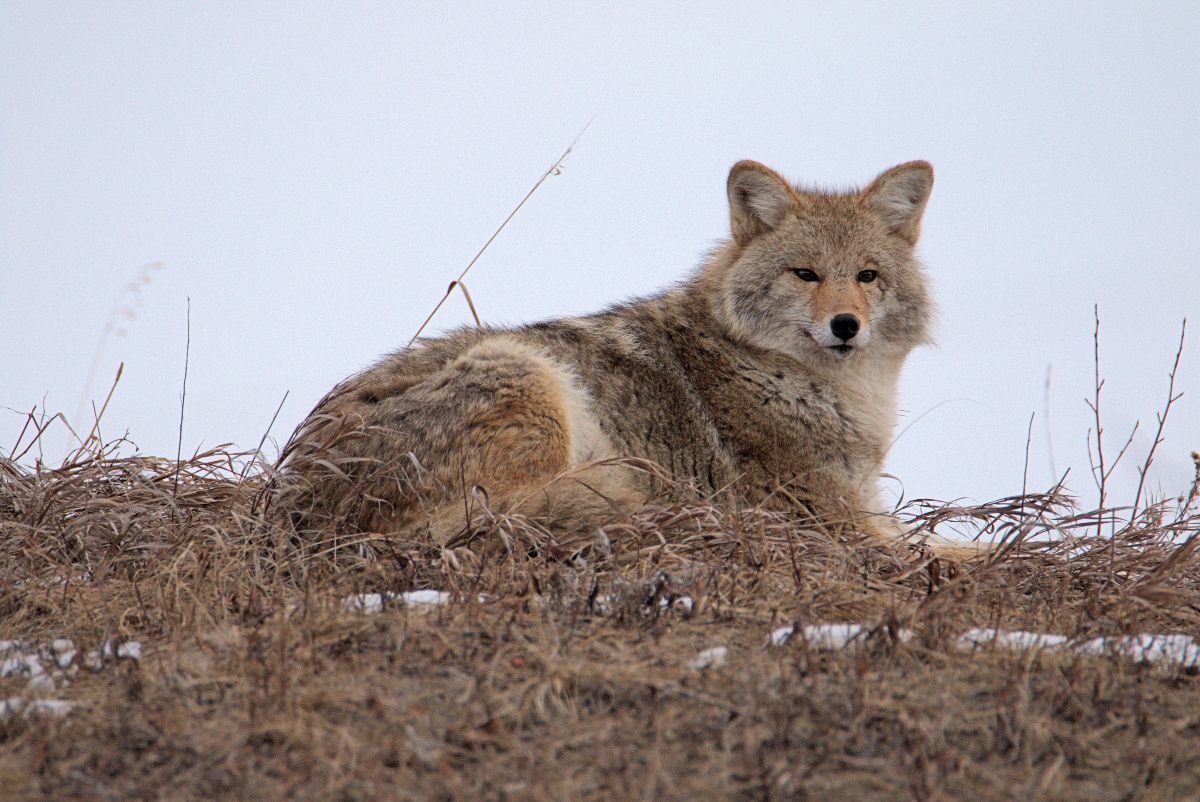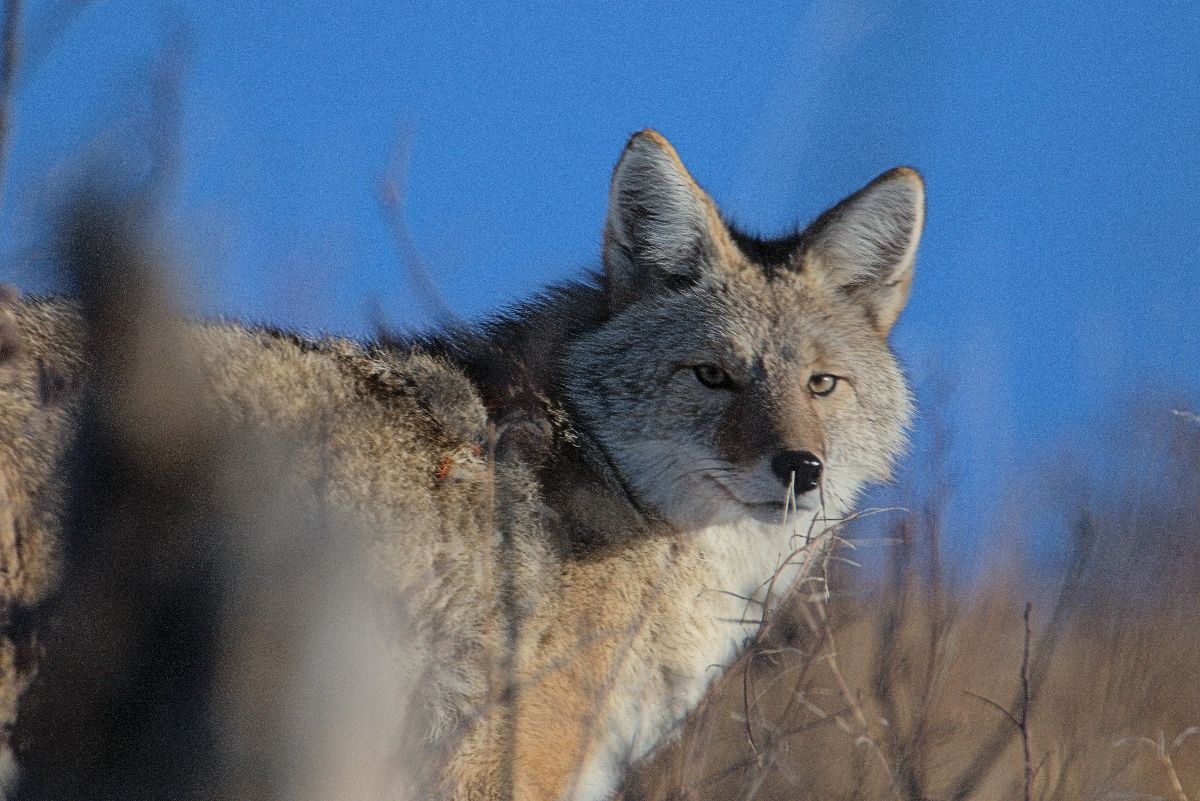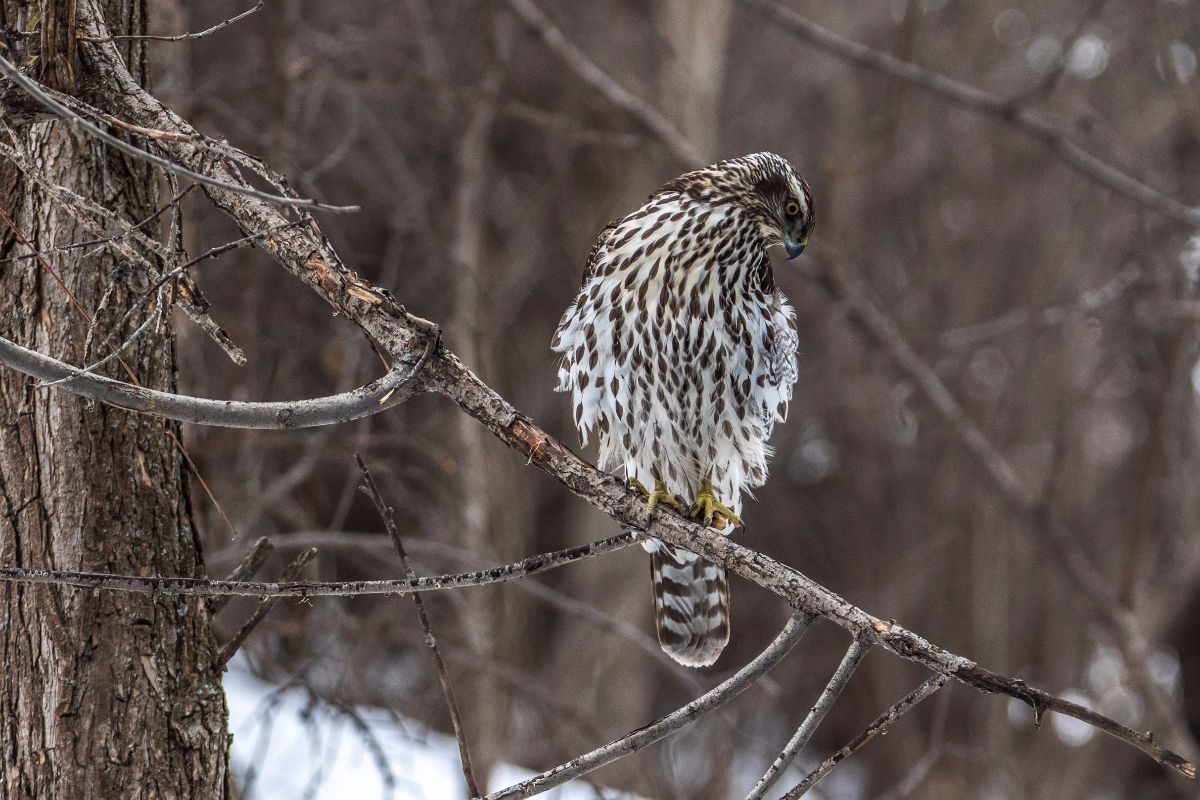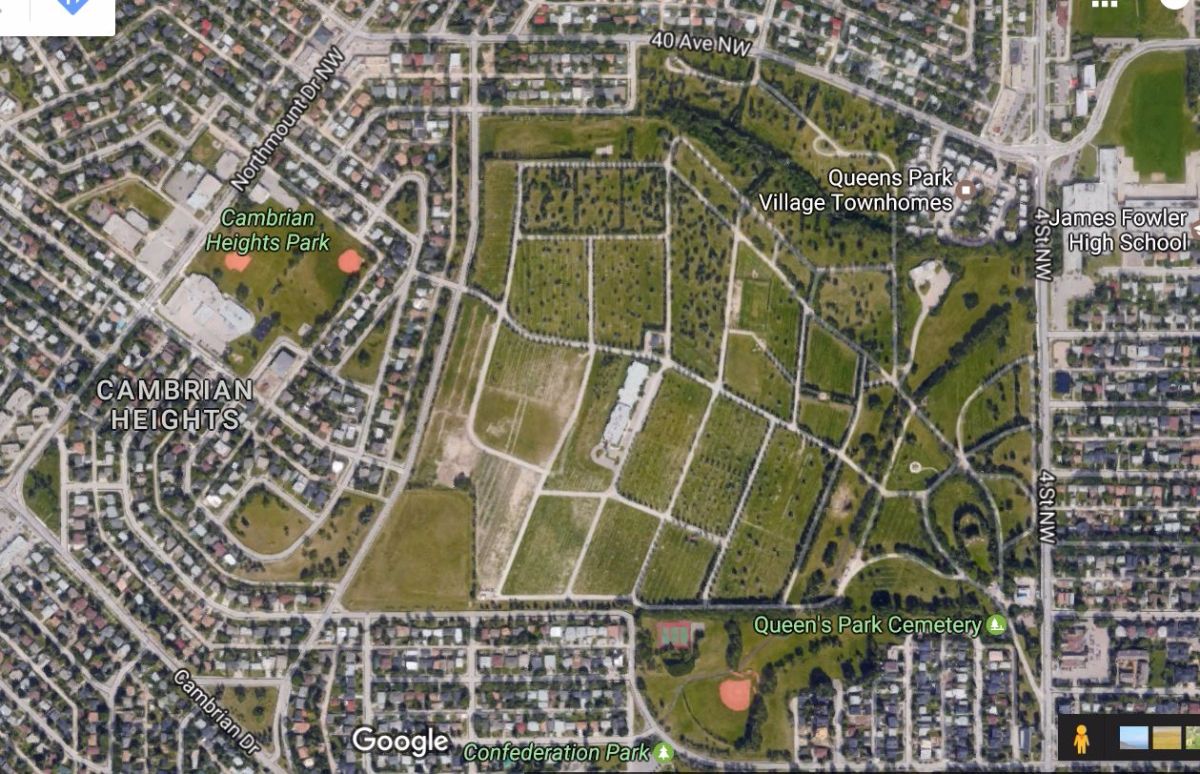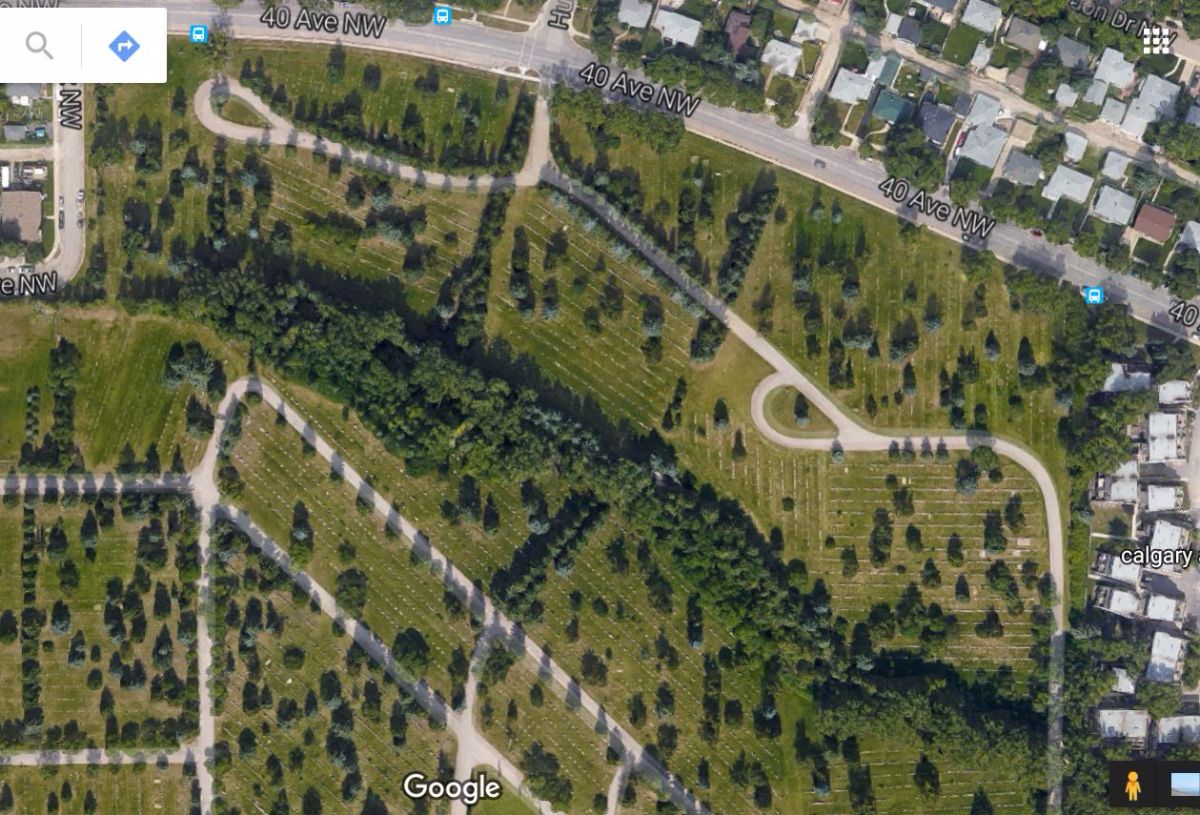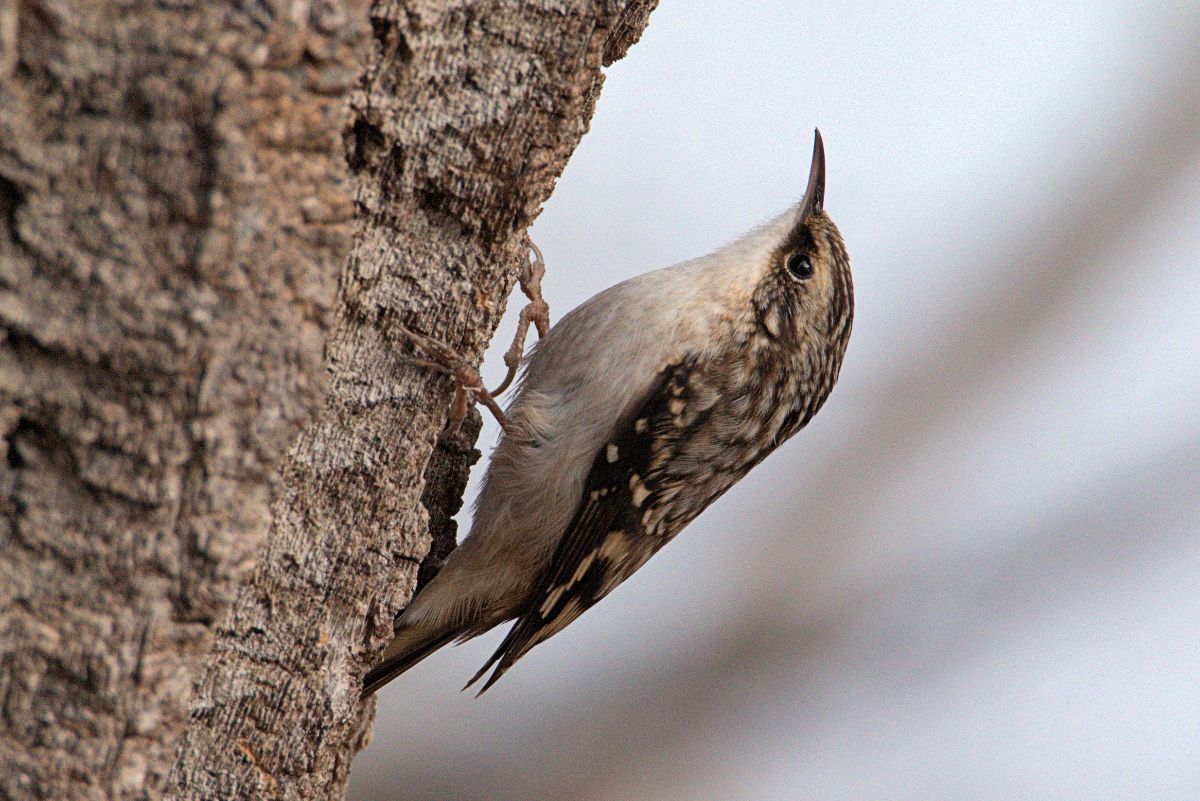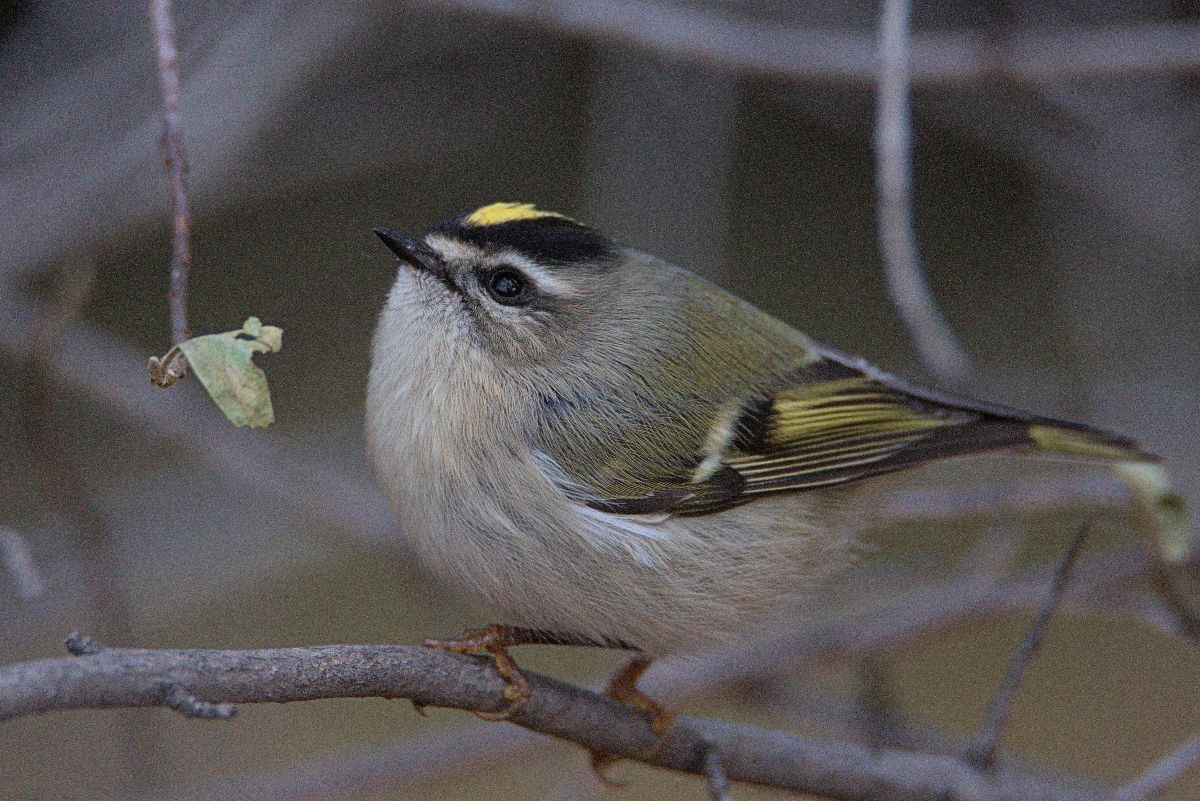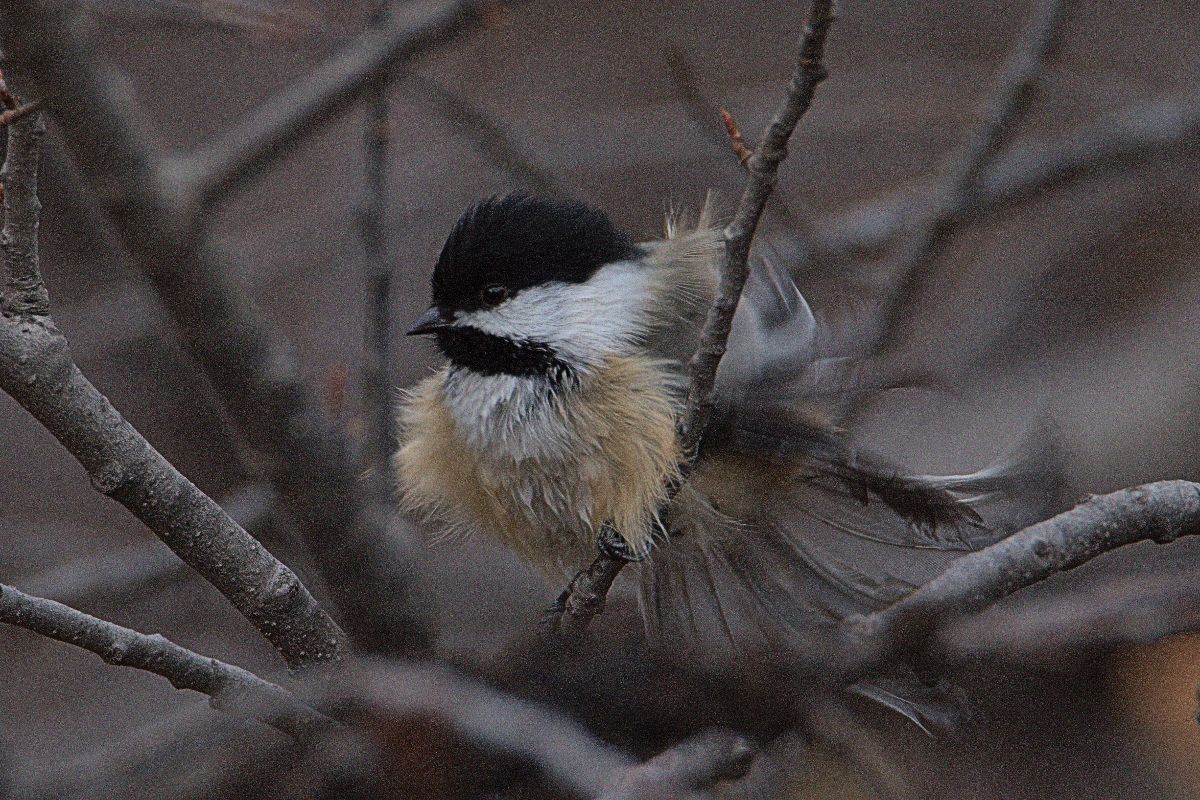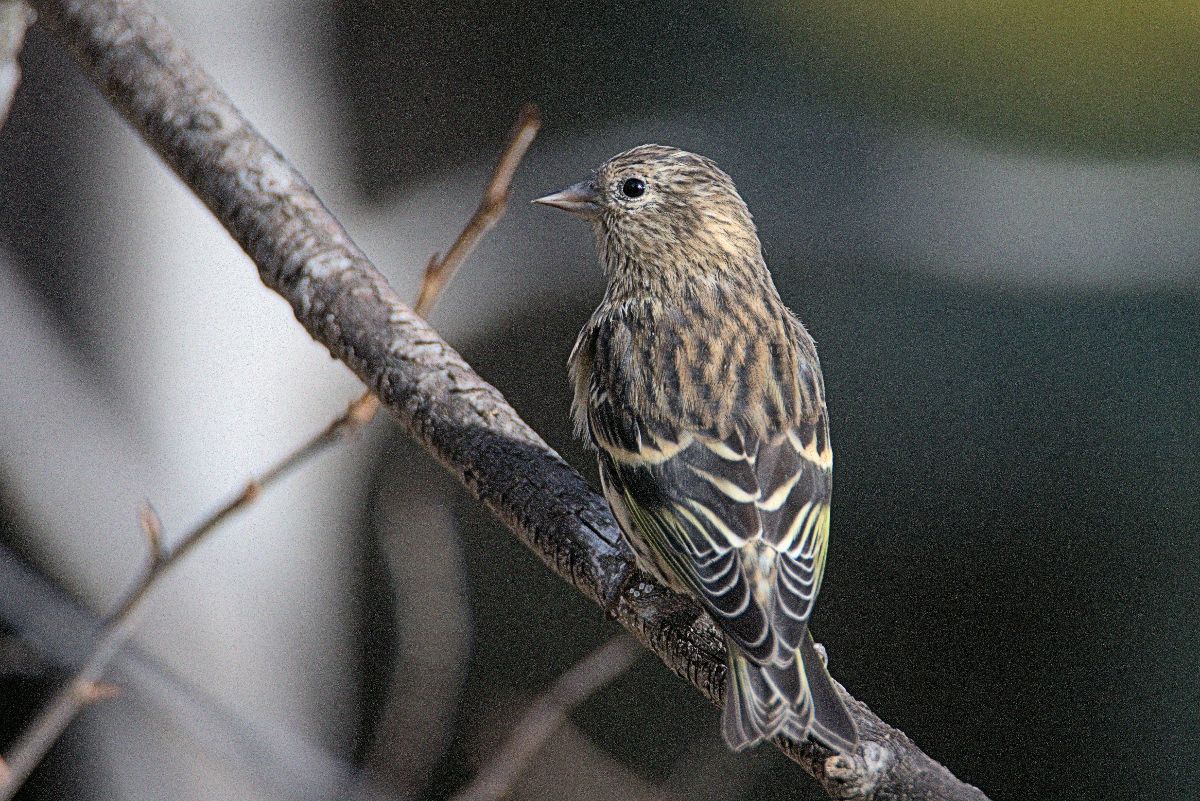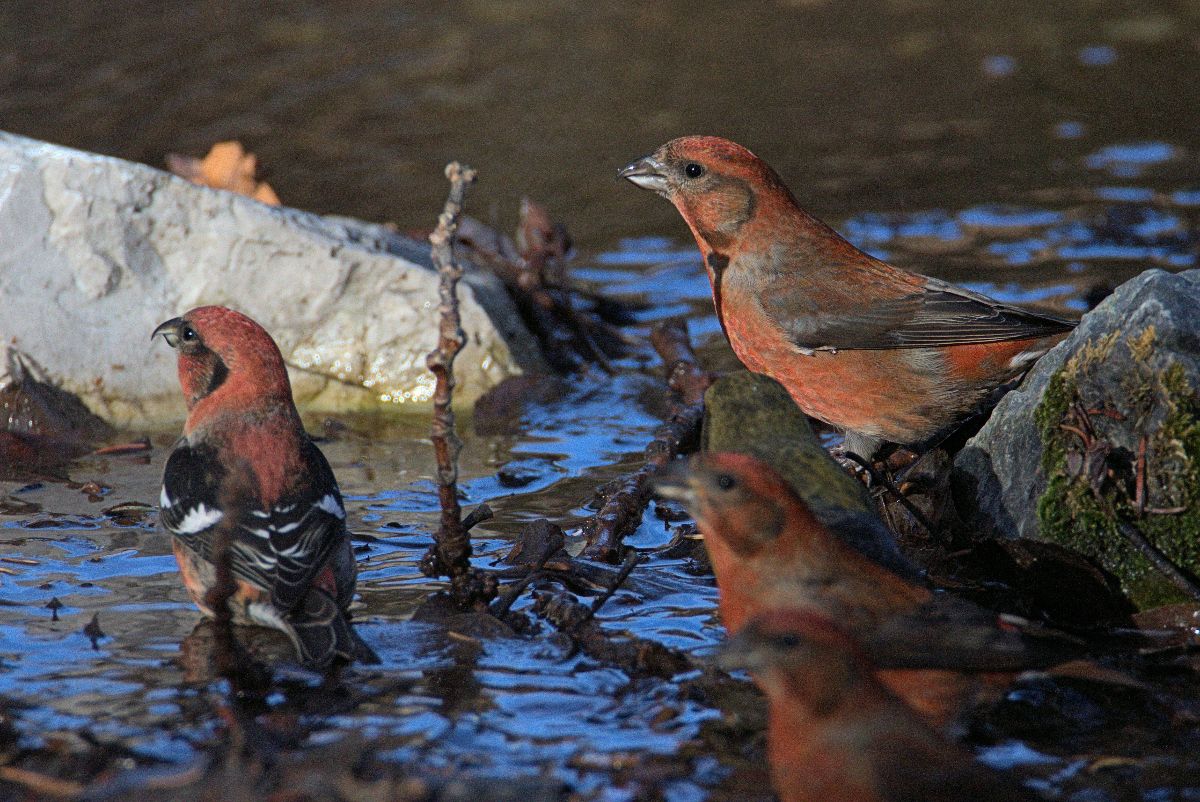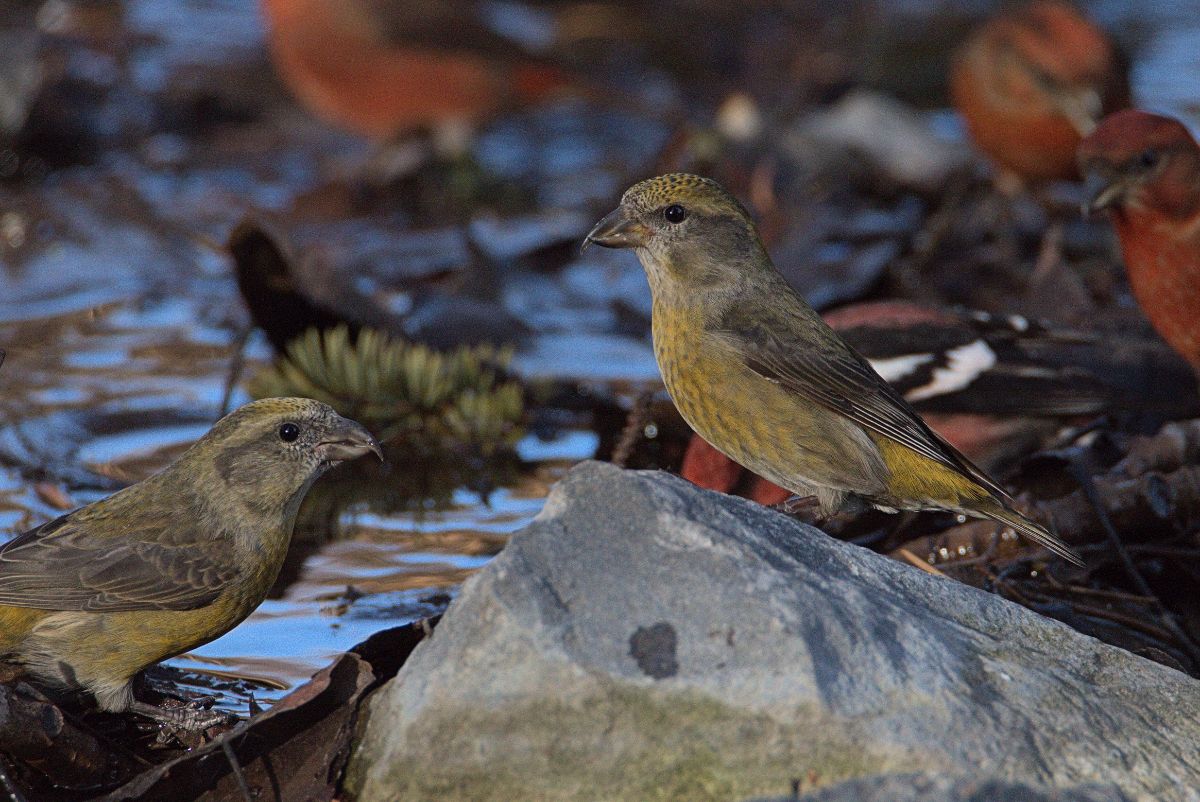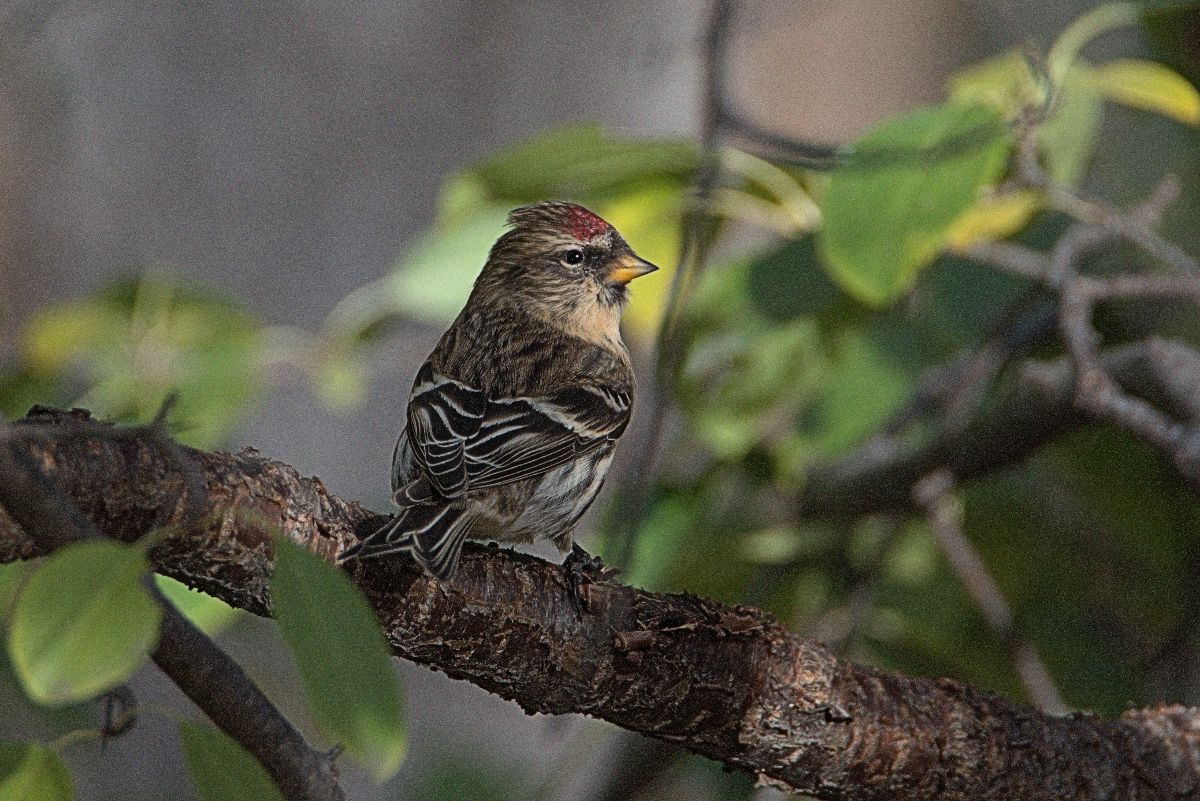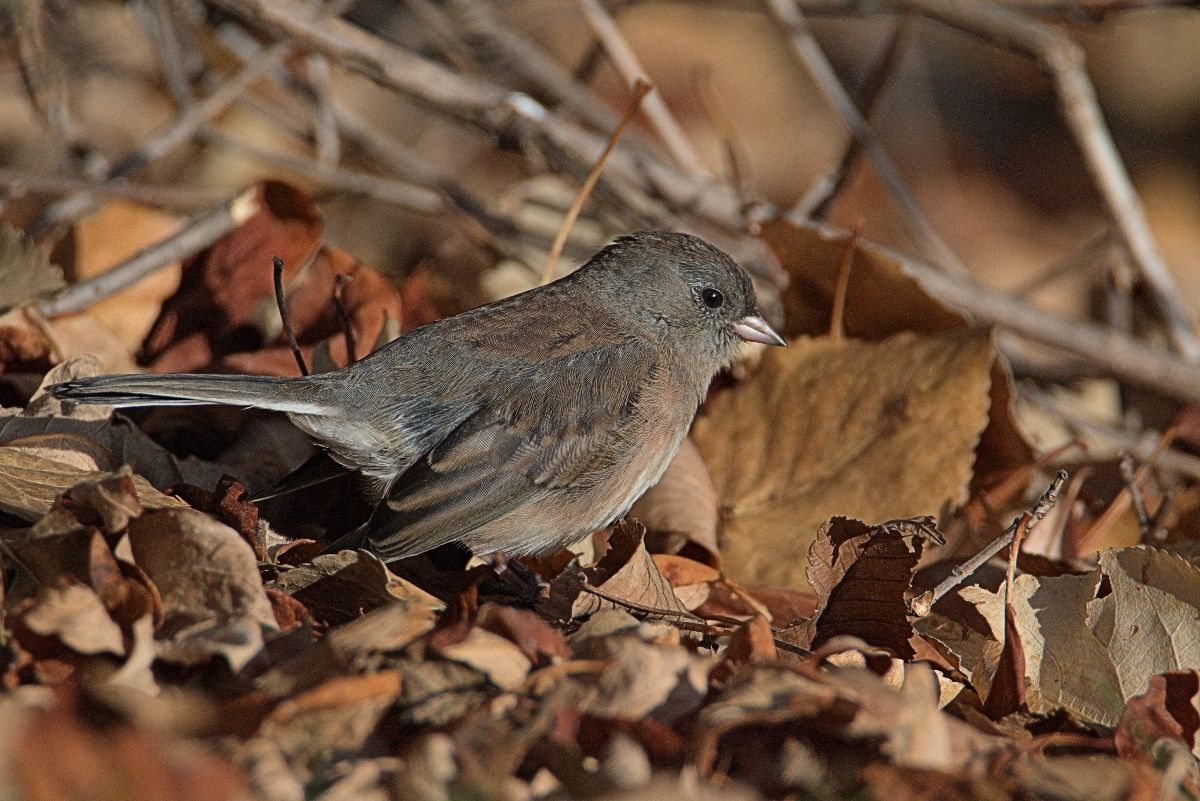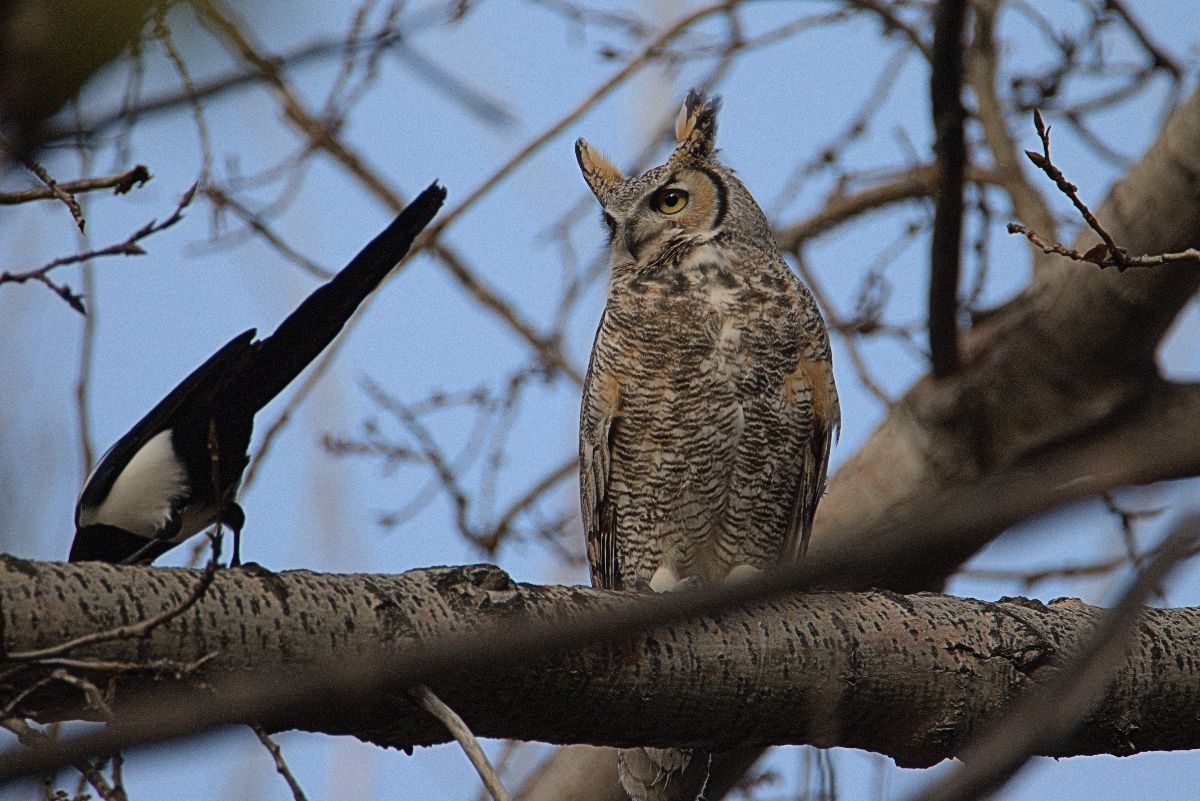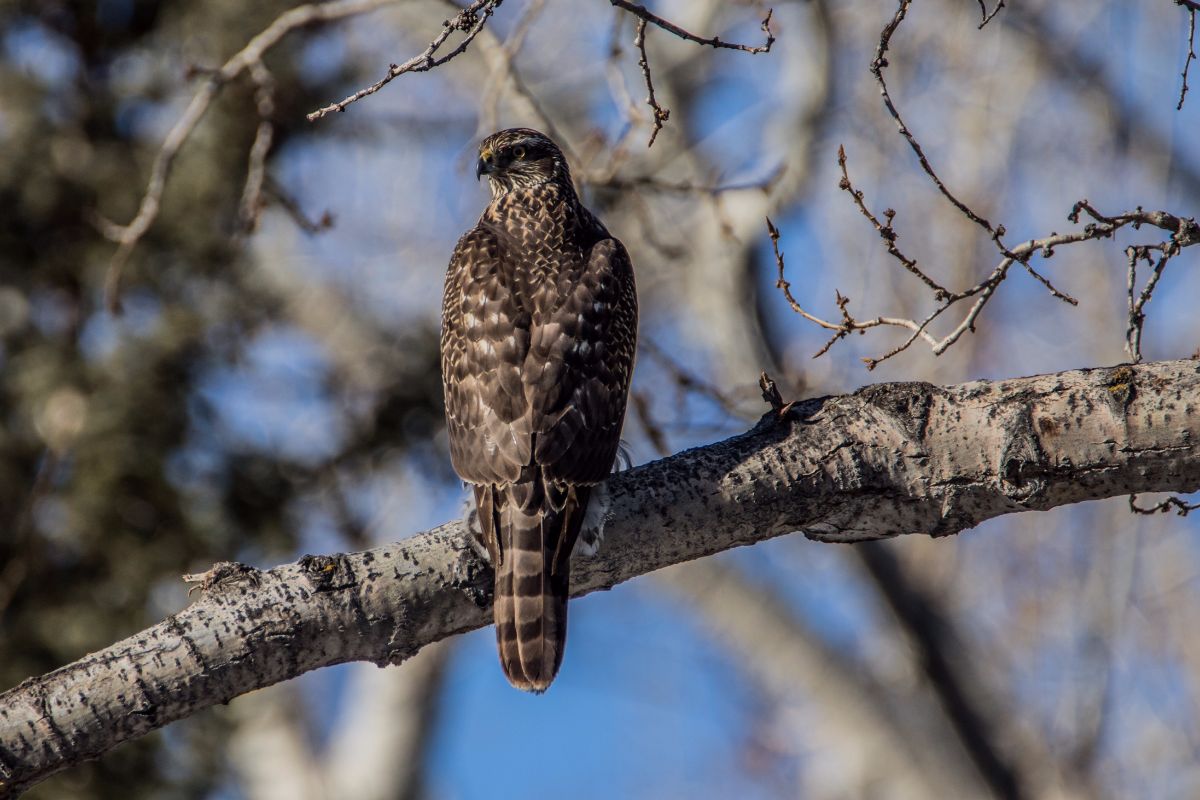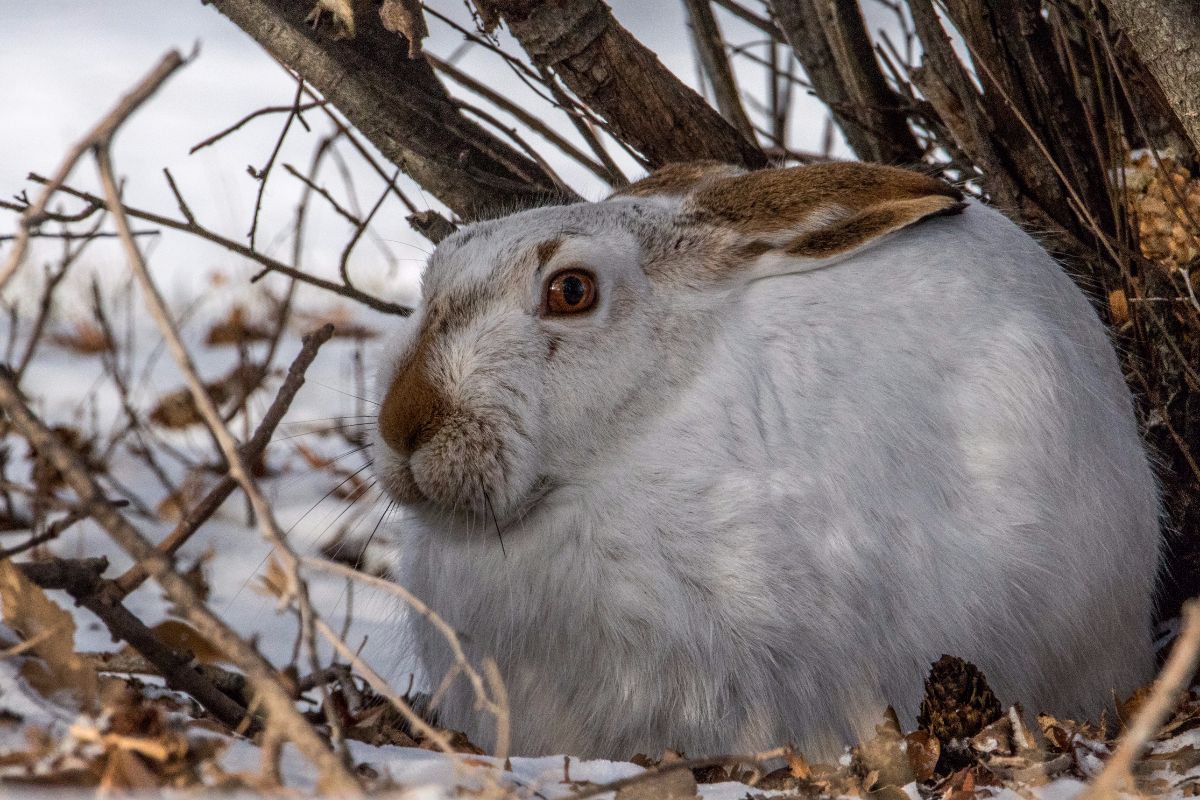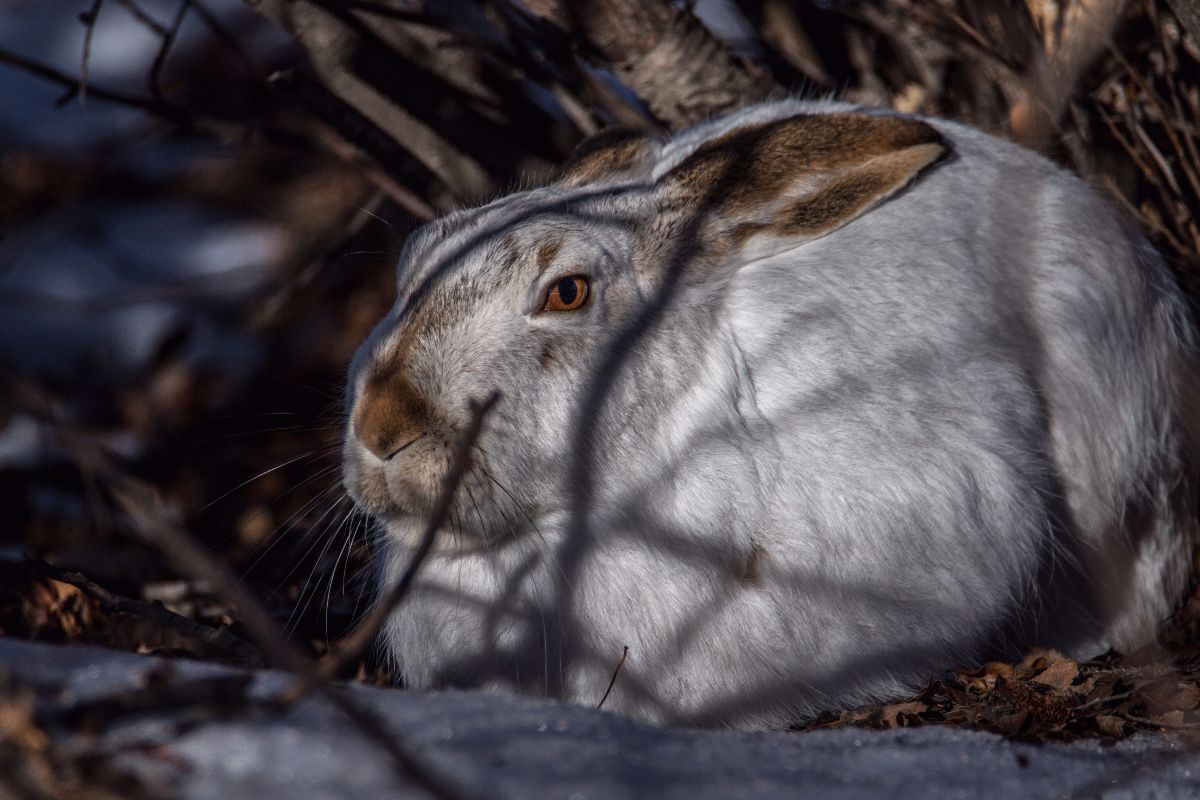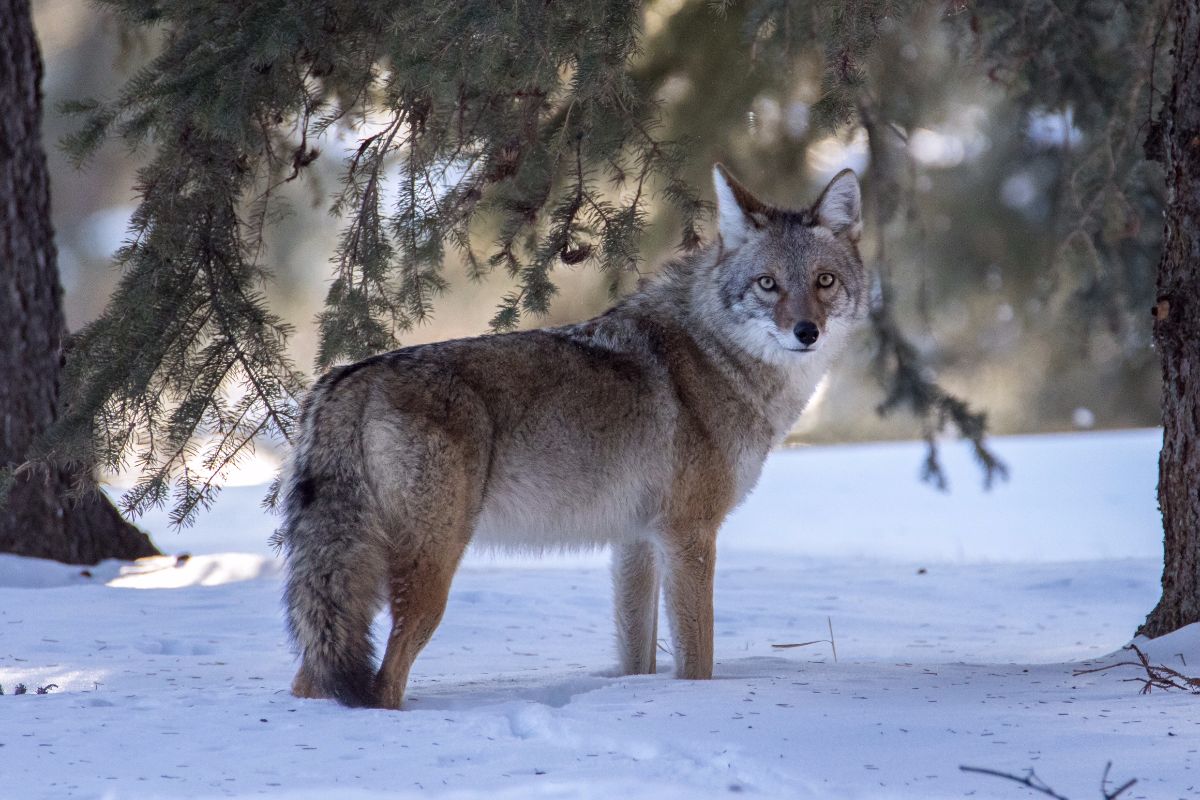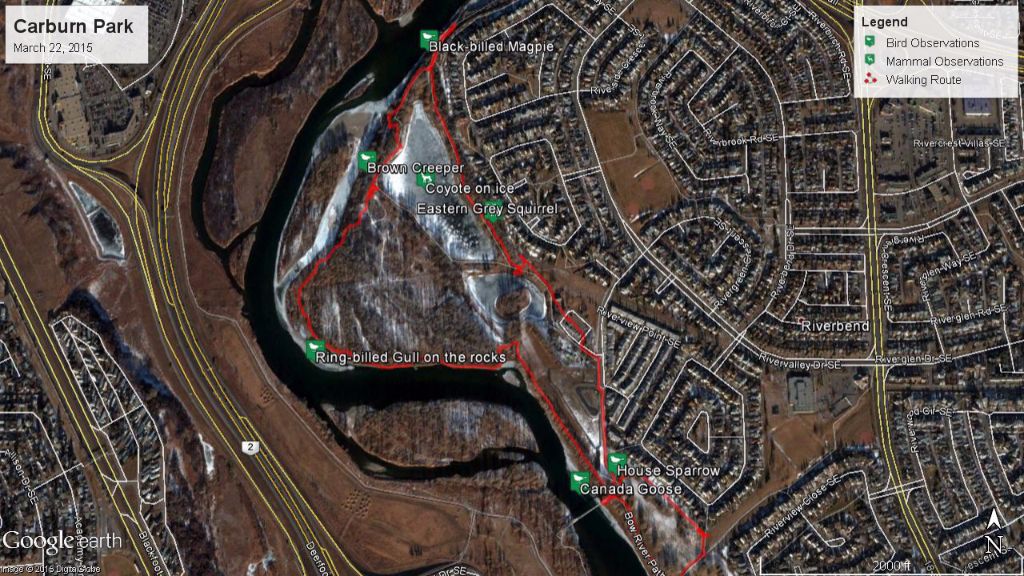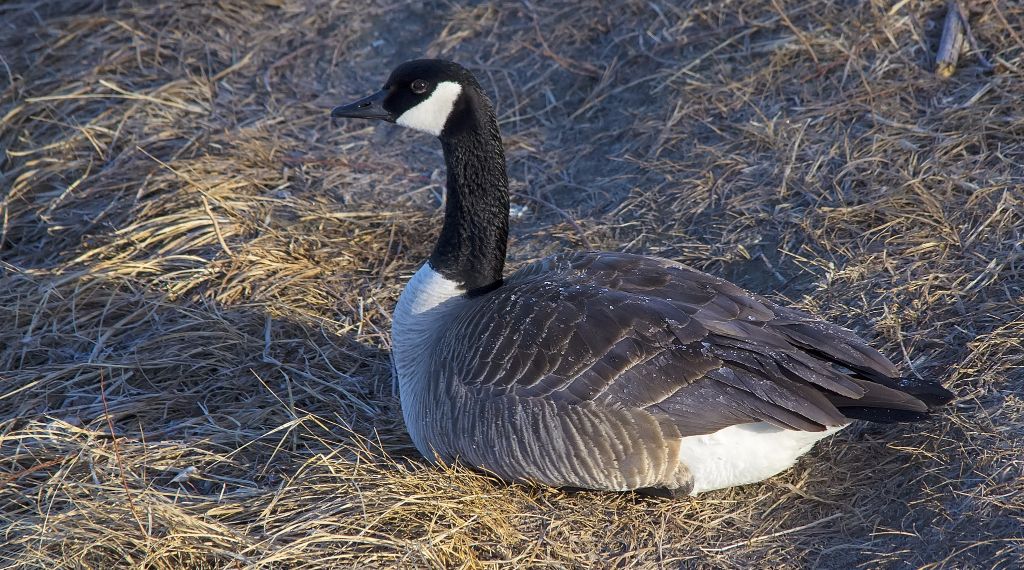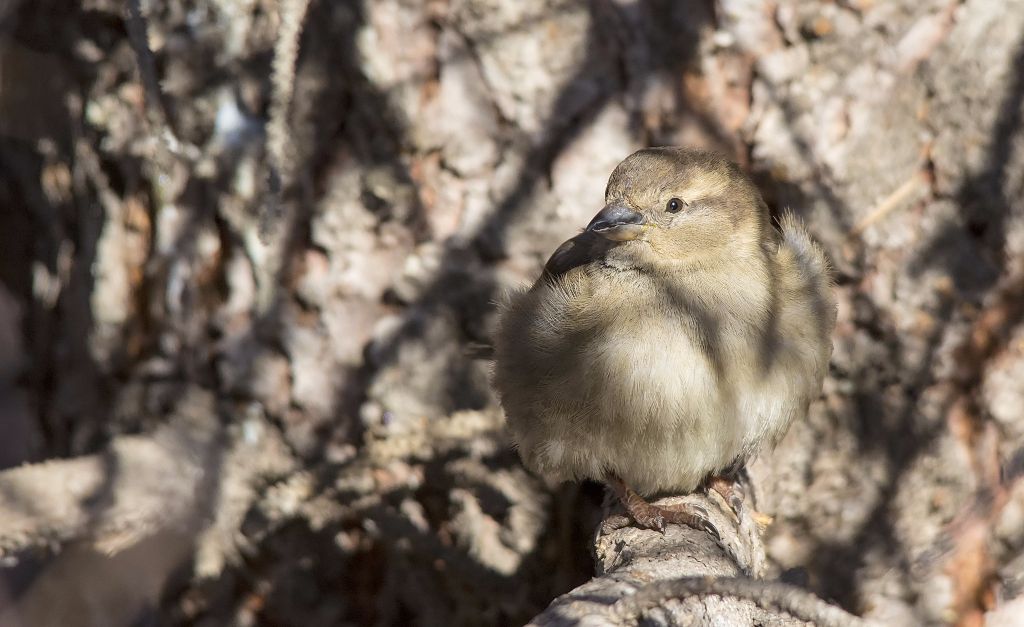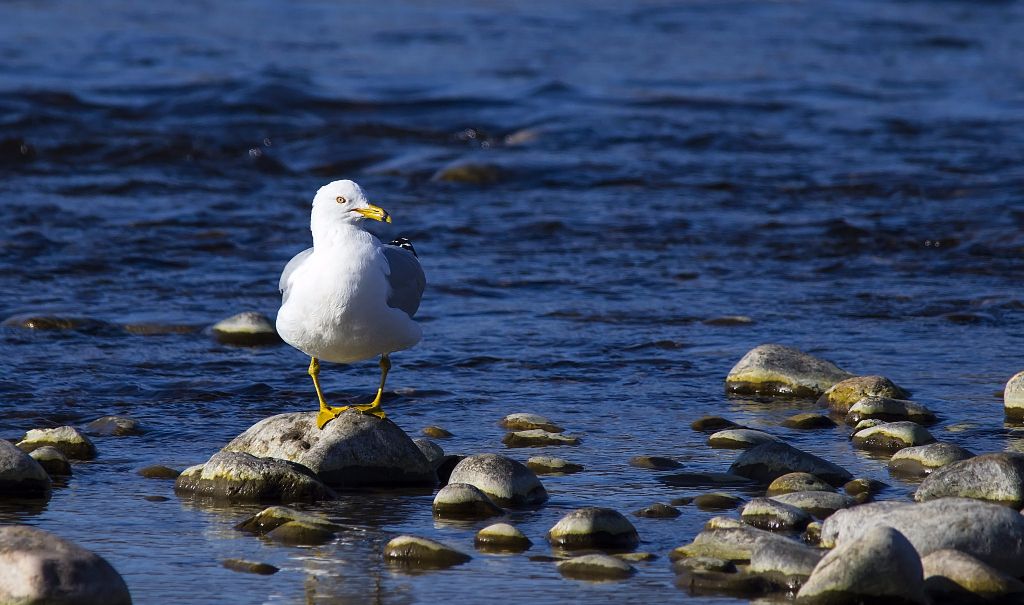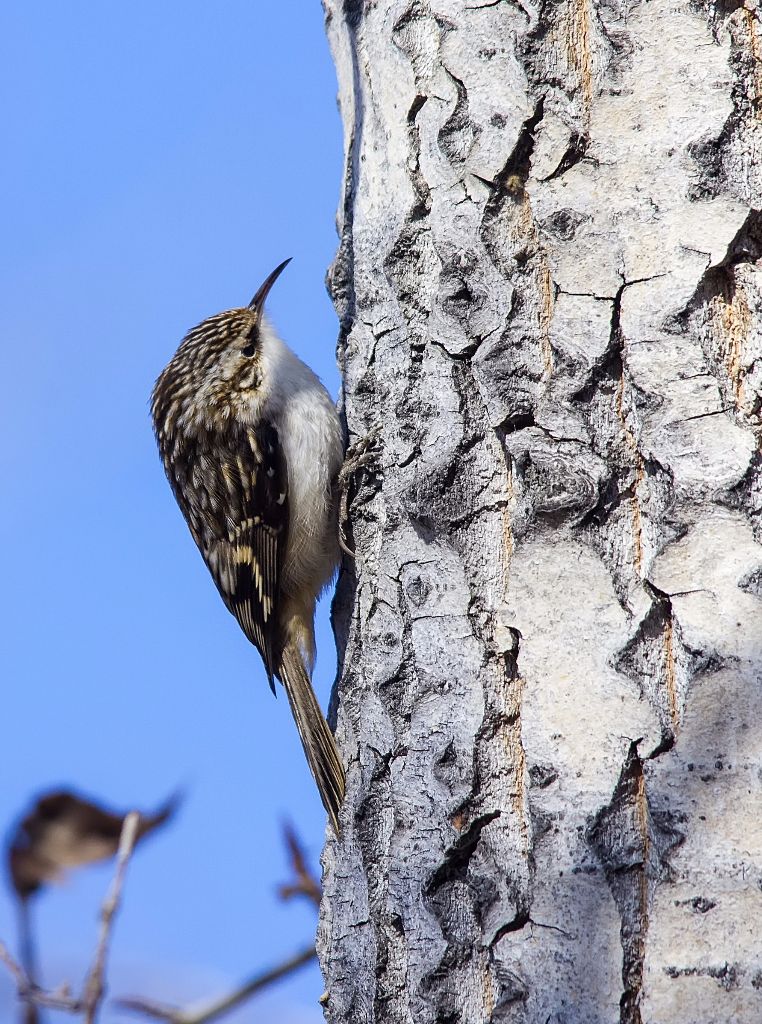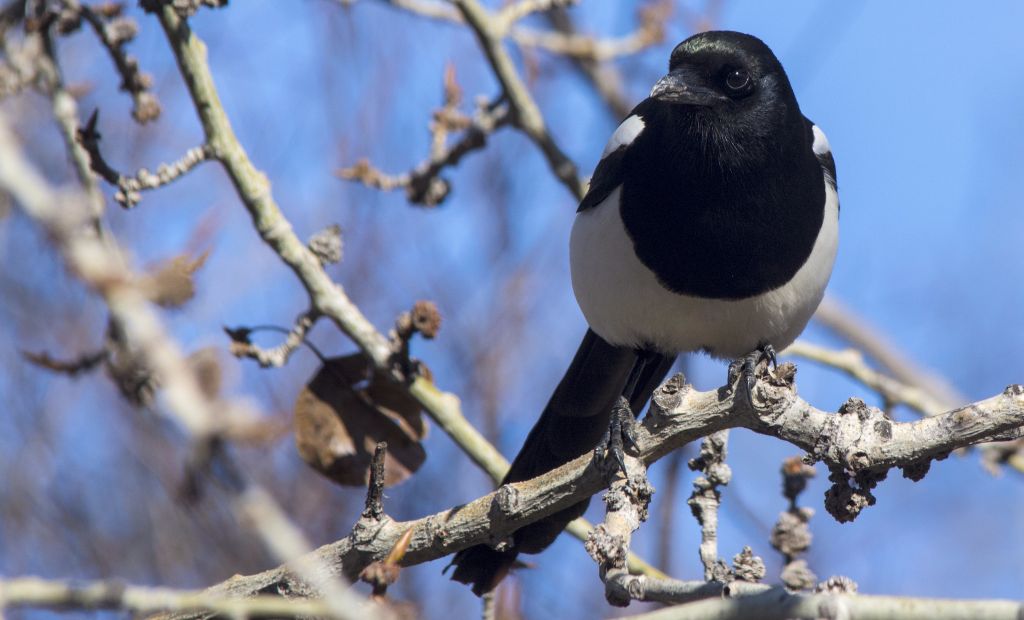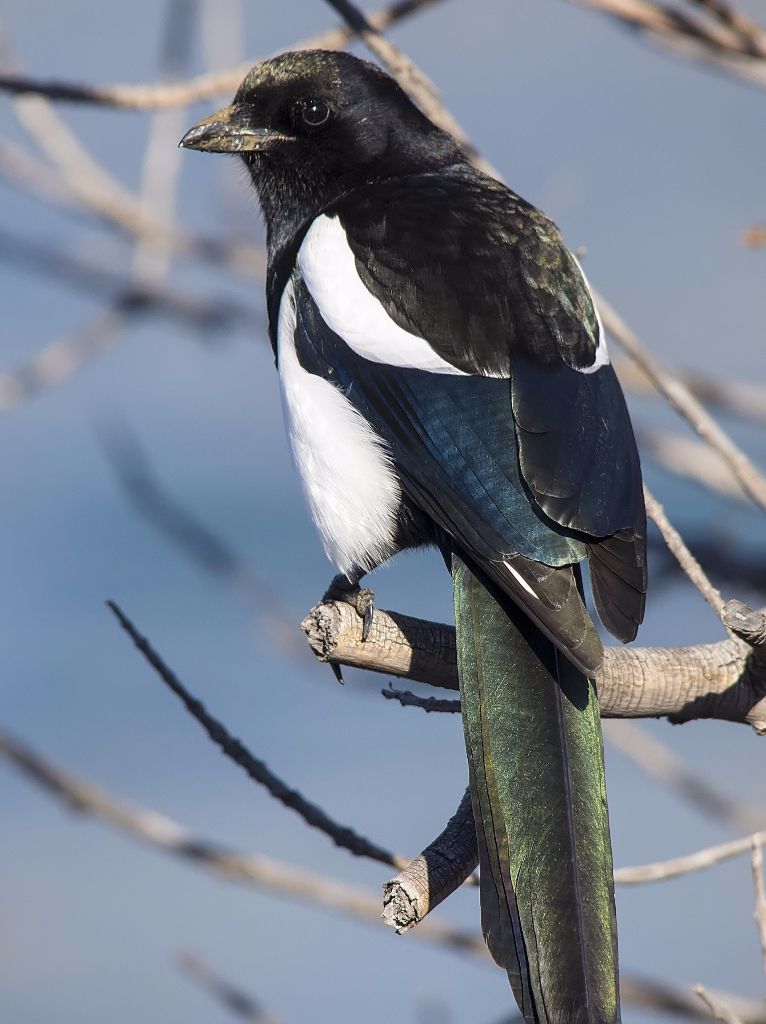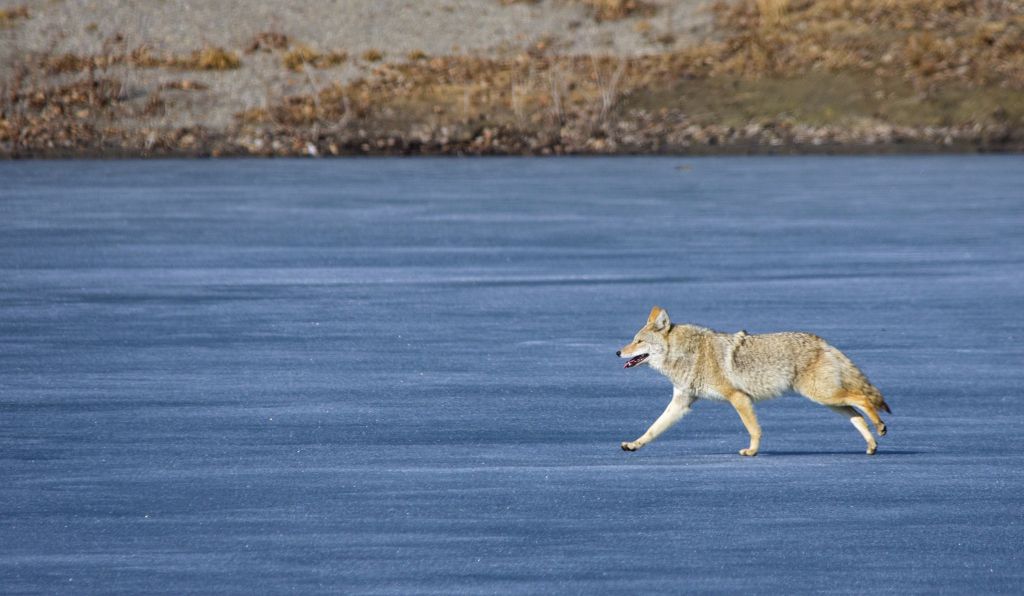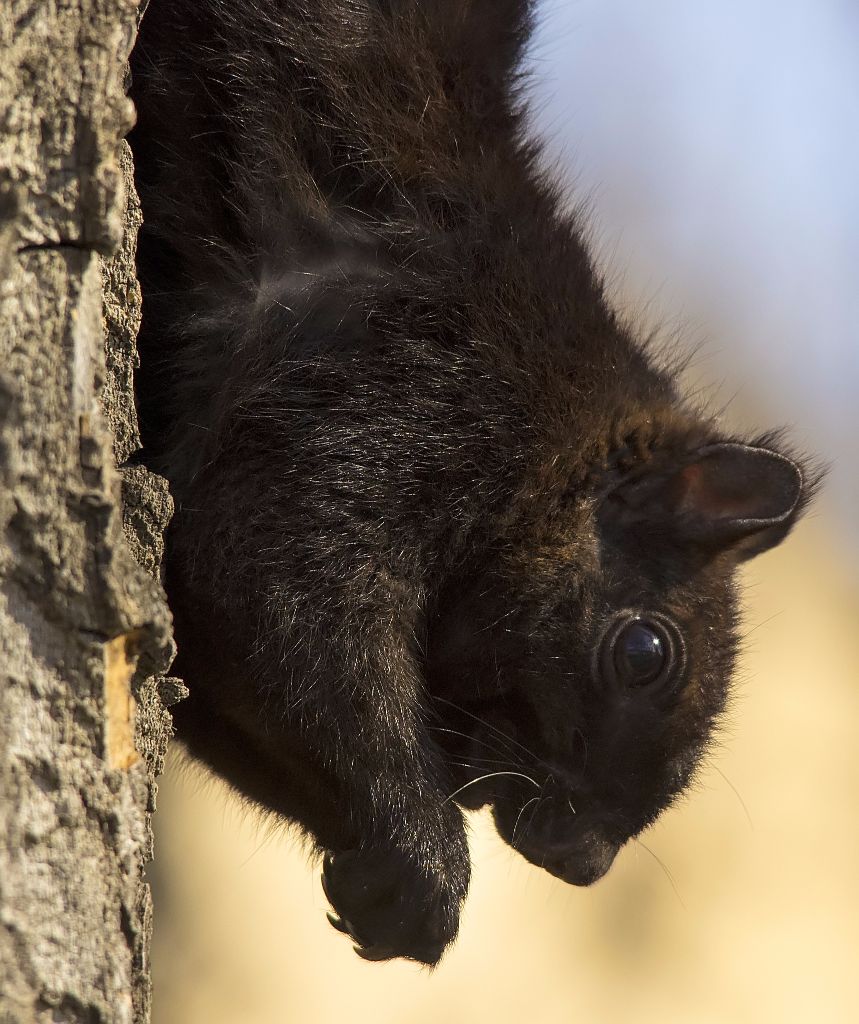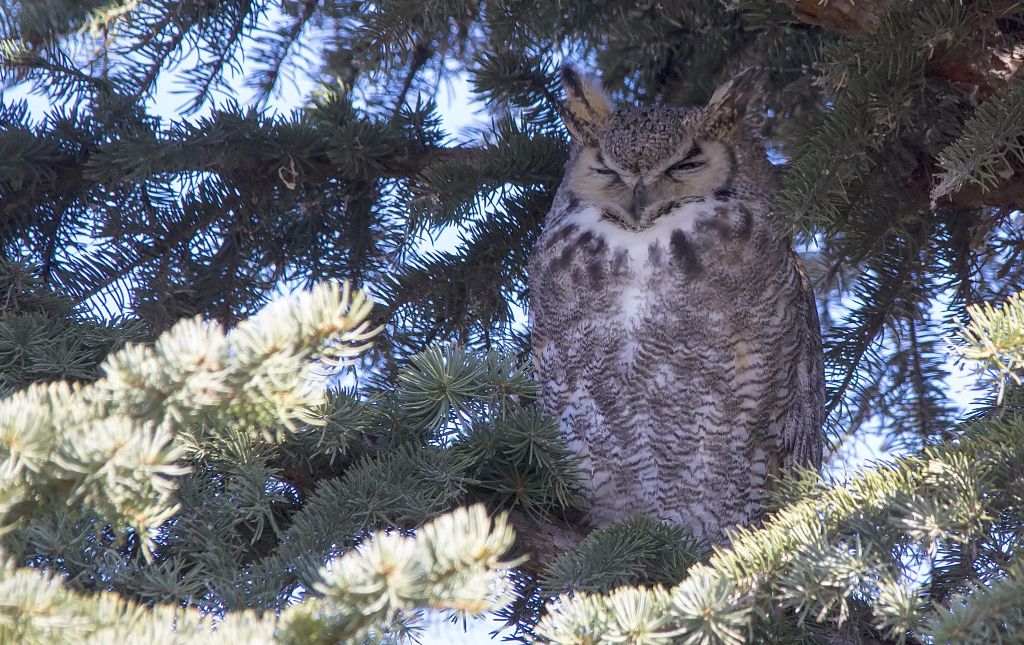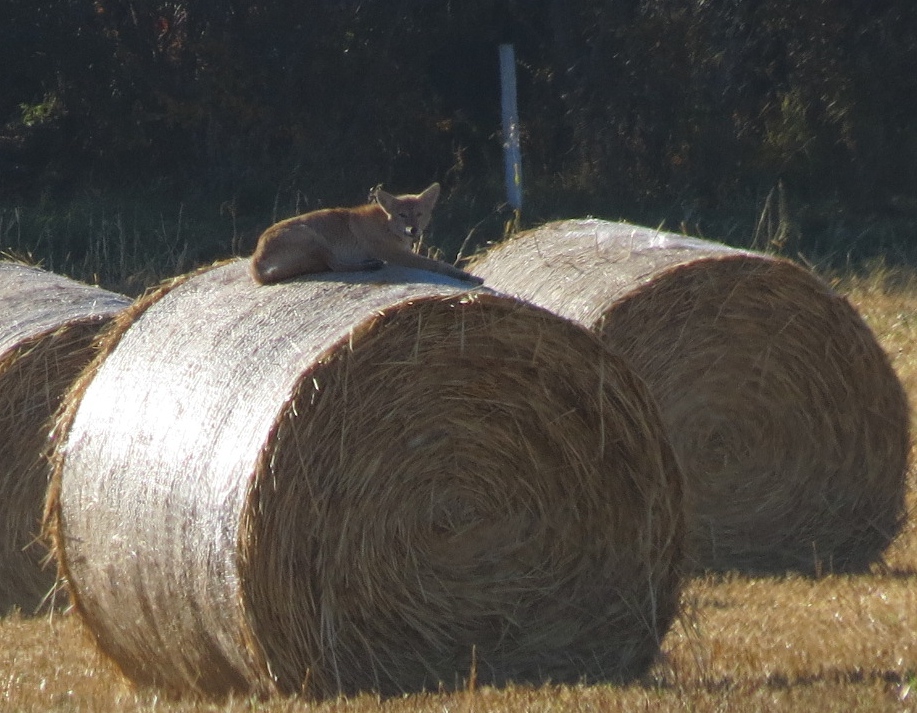Posted by Bob Lefebvre
Many local birders have been heading down to the Weaselhead Nature Area recently to see several owl species, notable a Barred Owl, which is a species not often seen in the city.
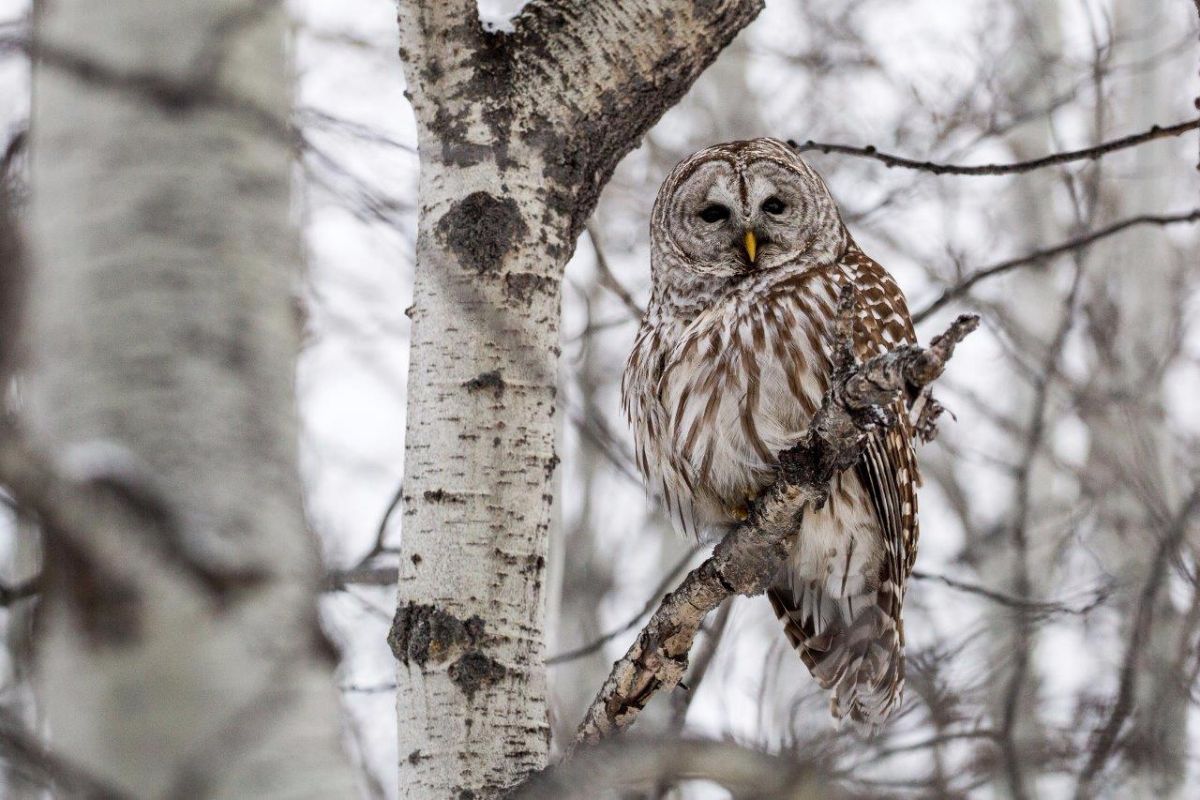
Barred Owl, Weaselhead (South Glenmore Park), January 24, 2017. Photo by David Mitchell
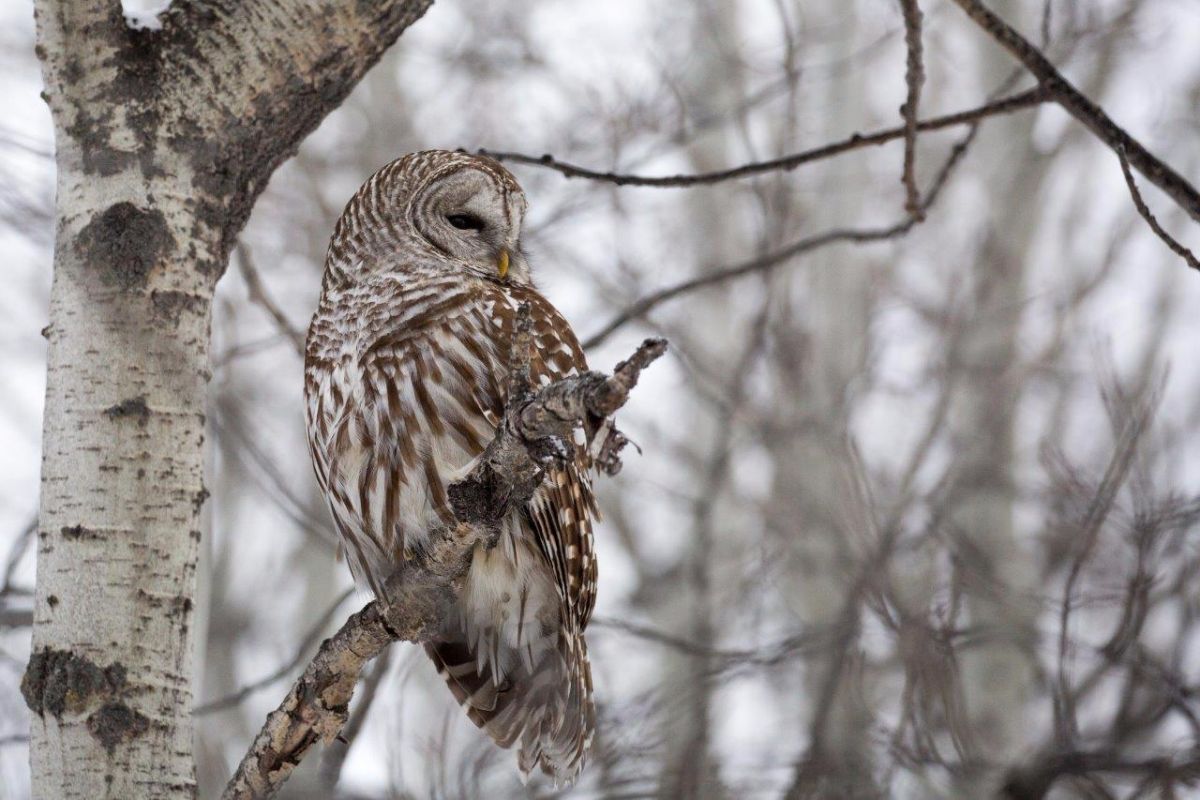
Barred Owl, Weaselhead (South Glenmore Park), January 24, 2017. Photo by David Mitchell
The Barred Owl is usually seen on the north-facing slope of South Glenmore Park just above the Weaselhead. In the Weaselhead proper there have been sightings of a Northern Pygmy Owl, Great Horned Owls, and a Northern Saw-whet Owl this month.
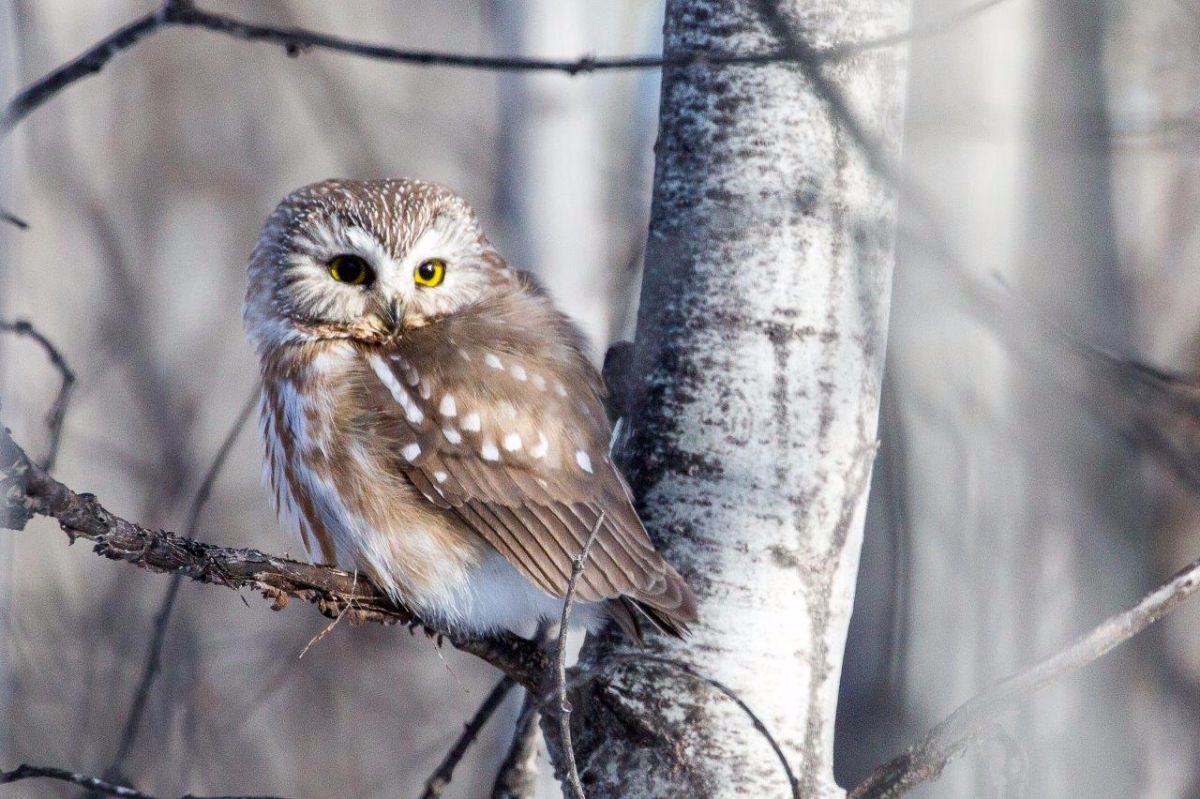
Northern Saw-whet Owl, west Weaselhead, January 25, 2017. Photo by David Mitchell
The Weaselhead is a great place for winter birds as it attracts the visiting winter finches as well as many of our resident birds, and it has a variety of mammals as well. Below are some birds and mammals of the Weaselhead photographed by Tony LePrieur.

Pine Grosbeak, male, Weaselhead, January 8, 2017.

Pine Grosbeak, female/immature, Weaselhead, January 8, 2017.

Pine Grosbeak, male, Weaselhead, January 21, 2017.
Pine Grosbeaks are here in small numbers this winter and the Weaselhead is probably the best place to find them. They readily come to the feeding stations along the main path.

Bohemian Waxwing, Weaselhead, January 21, 2017.

Bohemian Waxwing, Weaselhead, January 21, 2017.

Bohemian Waxwing, Weaselhead, January 21, 2017.
Bohemian Waxwings roost overnight in the Weaselhead in huge numbers but might be found there at any time of the day in winter.

Common Redpoll, Weaselhead, January 8, 2017.

Common Redpoll, Weaselhead, January 8, 2017.

Common Redpoll, Weaselhead, January 21, 2017.
Another of our visiting winter finches, redpolls (common and Hoary) are here in small numbers this winter. They are easy to find in the Weaselhead as they also go to the feeders.

Black-capped Chickadee, Weaselhead, January 8, 2017.
Black-capped Chickadees are one of the most common songbirds in the Weaselhead year-round. You can also find Boreal Chickadees and occasionally Mountain Chickadees there.

Downy Woodpecker, Weaselhead, January 21, 2017.

Hairy Woodpecker, male, Weaselhead, January 21, 2017.
Other resident woodpeckers are the Pileated Woodpecker and Northern Flicker (Flickers are migratory but we have some here year-round). In winter you can sometimes find Black-backed and American Three-toed Woodpeckers as well.

Blue Jay, Weaselhead, December 6, 2015.

Dark-eyed Junco (Oregon subspecies), Weaselhead, December 6, 2015.
These sparrows are more commonly seen in the winter, and it is far more common to see the Slate-colored subspecies of Dark-eyed Junco.

Pine Siskin, Weaselhead, February 28, 2016.
Siskins are erratic in their movements and there are very few in the city right now. When there are big flocks around you will find them in the Weaselhead.

White-throated Sparrow, Weaselhead, December 6, 2015.
White-throated Sparrows are common breeders in the Weaselhead and you can hear them singing loudly there in the spring. Usually a few overwinter in Calgary, but I haven’t heard of any in the Weaselhead this winter.

American Tree Sparrow, Weaselhead, February 28, 2016.
Tree Sparrows pass through on migration but we often have some overwinter here. They will come to seeds under the feeders in the Weaselhead. Again, I haven’t heard of any this winter.
And now for a few mammals.
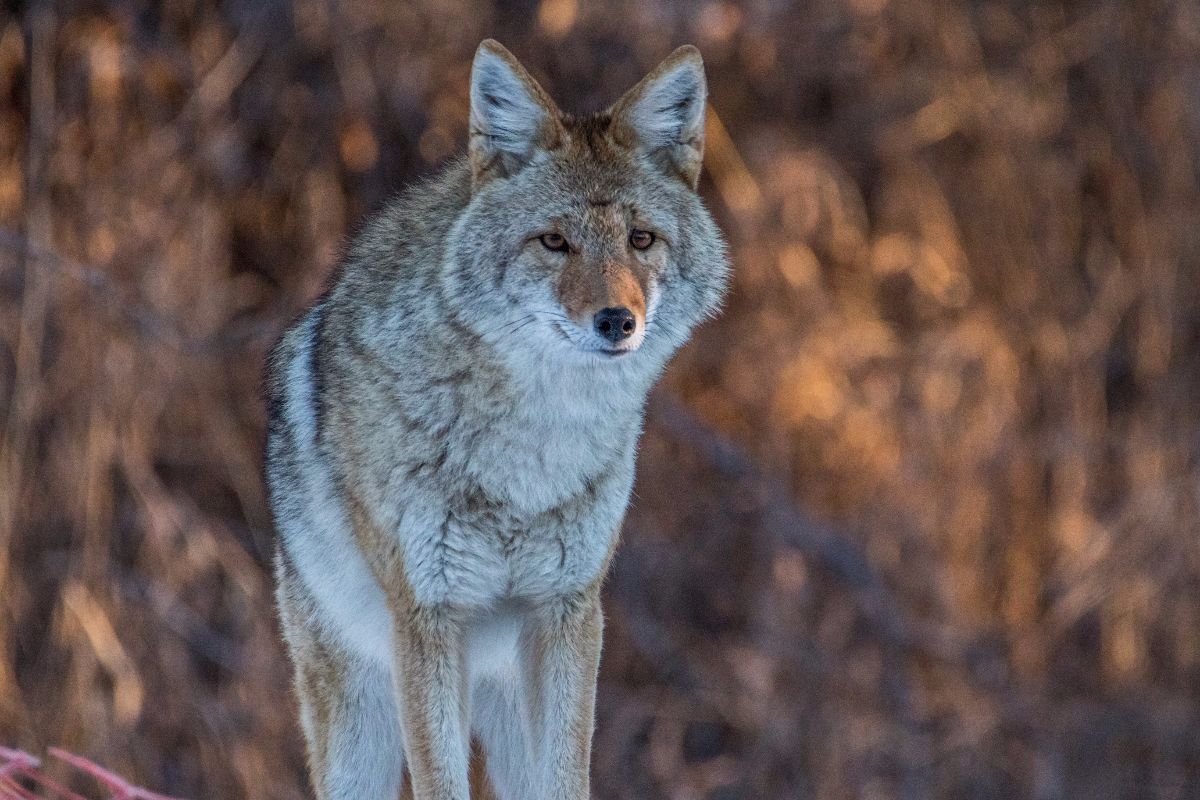
Coyote, Weaselhead, January 21, 2017.

Coyote, Weaselhead, December 6, 2015.

Meadow Vole, Weaselhead, February 28, 2016.
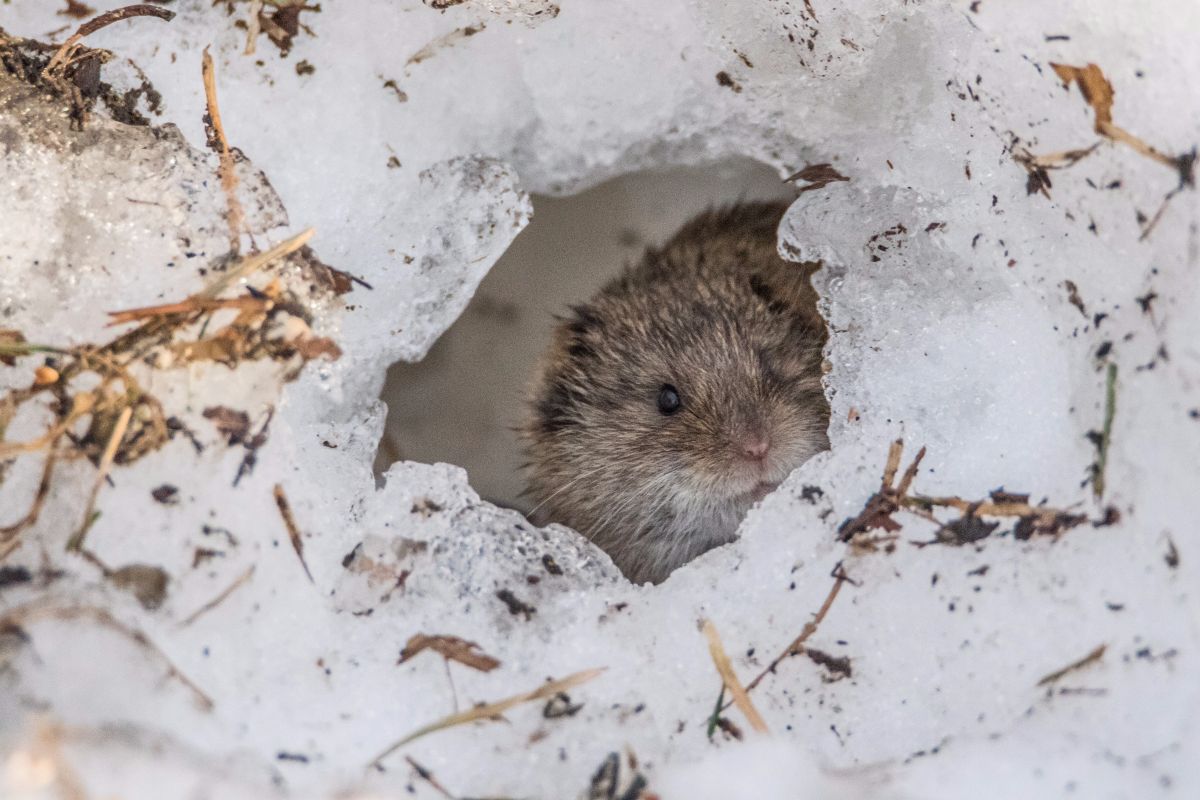
Meadow Vole, Weaselhead, January 28, 2017.
I seem to see more Meadow Voles in the Weaselhead than anywhere else. In the winter look for them scurrying under feeders to quickly grab a seed. They are the preferred prey for Northern Pygmy-Owls.
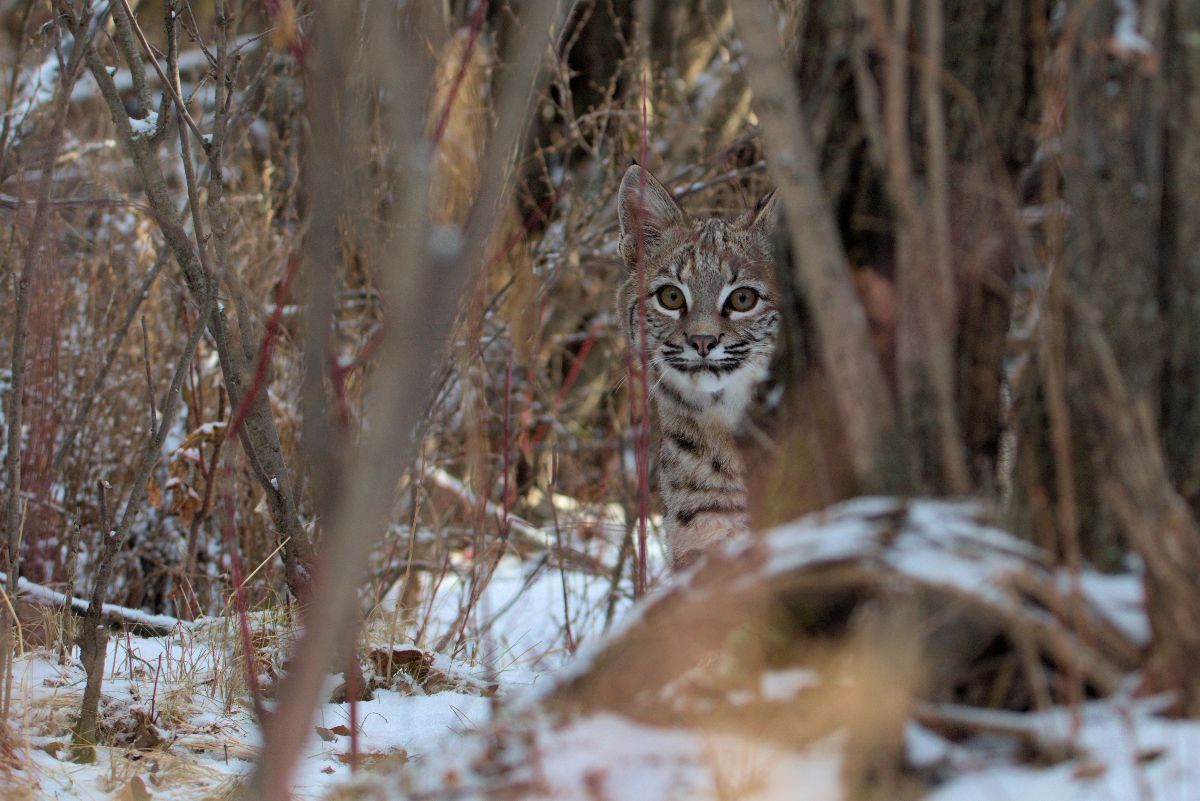
Bobcat, Weaselhead, December 13, 2015.
Bobcats are seen more often in the Weaselhead than anywhere else in the city. To see more photos of this one and the rest of its family, see this post.
The Weaselhead is also one of the best places in the city to see Snowshoe Hares and, in the summer, Least Chipmunks. Red Squirrels are also common, and it is one of the few places in the city where you can reliably find Northern Flying Squirrels.
